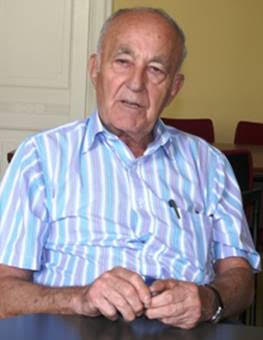
THE VOICE OF INTERNATIONAL LITHUANIA
|
VilNews has its own Google archive! Type a word in the above search box to find any article.
You can also follow us on Facebook. We have two different pages. Click to open and join.
|
Featured black
- Posted by - (0) Comment
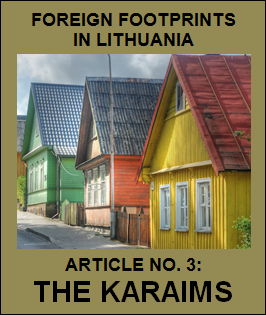
Lithuania has an amazing 700-year history as an international melting pot. This has been especially evident since 1323, the year Grand Duke Gediminas founded Vilnius as Lithuania’s capital city and immediately decided to invite merchants, craftsmen, bankers, farmers, and soldiers from all Europe to come to the new capital, guaranteeing all freedom of beliefs and good working conditions. Vilnius became international, though with less of German or Scandinavian influence, as one could expect, rather influenced by Italy and Mediterranean ideas – greatly different from the other two Baltic capitals where Hanseatic influence became dominant.
VilNews will over some time this autumn publish articles about impacts of foreign nations and cultures here. We also welcome you, dear readers, to share with us information you may have about ‘foreign footprints in Lithuania’.
Karaims – Turkic tribe that found a new home in Lithuania
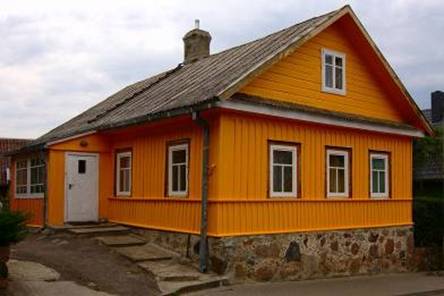
Karaim house in Trakai, 30 km from Vilnius.
The Karaims represent the smallest ethnic group in Lithuania, inextricably linked with the Crimean victories of Grand Duke Vytautas who brought 380 Karaim families to his castle in Trakai back in the 1390s.
During the 600 years that they have lived in Lithuania, this small Turkic people have preserved a strong national consciousness. A rather inward-looking community life, firm moral principles based on the teachings of the Karaim religion, and steadfast adherence to tradition - all these things have contributed to the survival of the people, of their basic characteristics, such as language, customs, and rituals, and thus, of their national identity. What also helped the Karaims of Lithuania survive under difficult conditions was the tolerance and respect for them expressed during all those centuries not only in the everyday contacts between people but also in the official state documents of various periods.
An exceptional period in the history of Lithuanian Karaims was the Soviet occupation, which thoroughly shook up the accustomed foundations of Karaim community life. The consequences of that time, which are still felt today, make it much more difficult for people to "return to their roots," to the rhythms of their national life.
Many world scholars are interested in the cultural heritage that Lithuanian Karaims have preserved to the present day. The still living Karaim language, which belongs to the West Kipchak subgroup of the Turkic family of languages, receives the most attention. It is being studied from several angles - as a language that has preserved rare old forms and words that have disappeared from other languages of the Turkic family and also as one that has borrowed and in its own way adapted some features of vocabulary and syntax from neighbouring languages (Lithuanian, Russian, and Polish).
- Bookmark :
- Digg
- del.icio.us
- Stumbleupon
- Redit it
- Posted by - (4) Comment

Lithuania has an amazing 700-year history as an international melting pot. This has been especially evident since 1323, the year Grand Duke Gediminas founded Vilnius as Lithuania’s capital city and immediately decided to invite merchants, craftsmen, bankers, farmers, and soldiers from all Europe to come to the new capital, guaranteeing all freedom of beliefs and good working conditions. Vilnius became international, though with less of German or Scandinavian influence, as one could expect, rather influenced by Italy and Mediterranean ideas – greatly different from the other two Baltic capitals where Hanseatic influence became dominant.
VilNews will over some time this autumn publish articles about impacts of foreign nations and cultures here. We also welcome you, dear readers, to share with us information you may have about ‘foreign footprints in Lithuania’.
Karaims – Turkic tribe that found a new home in Lithuania

Karaim house in Trakai, 30 km from Vilnius.
The Karaims represent the smallest ethnic group in Lithuania, inextricably linked with the Crimean victories of Grand Duke Vytautas who brought 380 Karaim families to his castle in Trakai back in the 1390s.
During the 600 years that they have lived in Lithuania, this small Turkic people have preserved a strong national consciousness. A rather inward-looking community life, firm moral principles based on the teachings of the Karaim religion, and steadfast adherence to tradition - all these things have contributed to the survival of the people, of their basic characteristics, such as language, customs, and rituals, and thus, of their national identity. What also helped the Karaims of Lithuania survive under difficult conditions was the tolerance and respect for them expressed during all those centuries not only in the everyday contacts between people but also in the official state documents of various periods.
An exceptional period in the history of Lithuanian Karaims was the Soviet occupation, which thoroughly shook up the accustomed foundations of Karaim community life. The consequences of that time, which are still felt today, make it much more difficult for people to "return to their roots," to the rhythms of their national life.
Many world scholars are interested in the cultural heritage that Lithuanian Karaims have preserved to the present day. The still living Karaim language, which belongs to the West Kipchak subgroup of the Turkic family of languages, receives the most attention. It is being studied from several angles - as a language that has preserved rare old forms and words that have disappeared from other languages of the Turkic family and also as one that has borrowed and in its own way adapted some features of vocabulary and syntax from neighbouring languages (Lithuanian, Russian, and Polish).
During the times of the Polish-Lithuanian Commonwealth, the Karaims suffered severely during the Chmielnicki Uprising of 1648 and the wars between Russia and Poland in the years 1654-1667, when many towns were plundered and burnt, including Trakai, where in 1680 only 30 families were left. Catholic missionaries made serious attempts to convert the local Karaims to Christianity, but ultimately were largely unsuccessful. The local Karaim communities still exist in Lithuania (where they live mostly in Panevėžys and Trakai regions) and Poland. The 1979 census in the USSR showed 3,300 Karaims. Lithuanian Karaim Culture Community was founded in 1988.
According to the Lithuanian Karaims website the Statistics Department of Lithuania carried out an ethno-statistic research "Karaim in Lithuania" in 1997. It was decided to question all adult Karaims and mixed families, where one of the members is a Karaim. During the survey, for the beginning of 1997, there were 257 Karaim nationality people, 32 of which were children under 16.
From linguistic and ethnogenetic point of view they belong to the oldest Turkish tribes - Kipchaks. This ethnonym (Kipchak) for the first time was mentioned in historical chronicles of Central Asia in the 1 st millennium BC. Anthropologically ancient Kipchaks were very close to Siberia inhabitants Dinlins, who lived on both sides of the Sajan Mountains - in Tuva and northern part of Gob.

Karaim priests,Khadji Seraya
Khan Shapshal together with
Simon Firkovich, 1930
In 5th cent. BC Kipchaks lived in the West of Mongolia, in 3 rd cent. BC they were conquered by Huns. Since 6 - 8 cent., when the first nomadic Turkish empires were founded, Kipchak's fate is closely connected with the history and migration of the Middle Asia tribes.
In Middle Ages Kipchaks started to play an important role in the Eastern Europe. European historians and linguists call them Kumans; Russian scientists call them Polovtsy. In Turkish literature they are known as Kipchaks.
Following after Turkish oguzes, who were the biggest Turkish tribe, in 10 th cent. Kipchaks crossed the Volga and settled in steppes near the Black Sea and Northern Caucasus. Huge territories occupied by Kipchaks from the West of Tian- Shan to the Danube, in 11-15 th cent. were called Dest-e-Kipchak (Kipchak's steppes). They did not have an integral state; khans guided the union of different tribes.
Khasar's kaganate, spread over southern territories of contemporary Russia, in 9 th cent.being at its blossom, was famous for its religious tolerance. Karaim missionaries reached the kaganate in 8 - 10 cent. passed their faith to some Turkish tribes (Khasars, Kipchaks-Kumans, and others), living in the southern steppes of Russia and Crimea. Common language and religion united these tribes as a nation for a long time; the name of religion became ethnonym. Contemporary Lithuanian Karaims are the descendants of those tribes.
|
|
|
The Karaims of Crimea, Galich-Luck area, Lithuania and Poland who have common origin, past, religion, language (with dialects), spiritual and factual culture, make the same nation.
The history of Karaims is connected with Lithuania since 1397-1398. According to the tradition, The Great Duke of Lithuania Vytautas, after one of the marches to the Golden Horde steppes, had to bring from Crimea several hundreds of Karaims and settle them in the Great Duchy of Lithuania. Vytautas could bring Karaims after he had beaten one of the hordes not far from Azov. Transference of several hundreds Karaim families and several thousands of Tatars was not done once. It was connected with the state policy of The Great Duchy - to inhabit the empty areas, to build towns and castles, to develop trade and economic life.
Initially, Karaims were settled in Trakai between two castles of The Great Duke, present Karaim Street. Later they were found living in Biržai, Naujamiestis, Pasvalys, Panevėžys, however, Trakai has always been the community's administrative and spiritual centre in Lithuania. Karaims themselves began to hold it not only a homeland, but as fatherland, too. Throughout the centuries their ethnic and cultural relations with the Karaims from Crimea and Galich-Luck areas were not interrupted either.
In order to get thorough information about Karaims' social, cultural, ethnic and religious situation, in 1997 The Statistics Department of Lithuania carried out the ethno-statistic research "Karaims in Lithuania". It was decided to question all adult Karaims and mixed families, where one of the members is a Karaim. During the survey, i.e beginning 1997 there were 257 Karaim nationality people, 32 among them were children under 16.
The change in the number of Karaims during the period of 40 years is shown:
| 1959 | 1970 | 1979 | 1989 | 1997 | |
| Total number of Karaims | 423 | 388 | 352 | 289 | 257 |
| Compared to total resident population, % | 0.02 | 0.01 | 0.01 | 0.01 | 0.01 |
Distribution of Karaims by age and sex:
| Karaimes | Male | Female | ||||
| total | % | total | % | total | % | |
| Total | 257 | 100 | 132 | 100 | 125 | 100 |
| of whom by age groups, years | ||||||
| below 16 | 32 | 12.4 | 14 | 10.6 | 18 | 14.4 |
| 16-29 | 38 | 14.8 | 21 | 15.9 | 17 | 13.6 |
| 30-39 | 30 | 11.7 | 17 | 12.9 | 13 | 10.4 |
| 40-49 | 31 | 12.1 | 17 | 12.9 | 14 | 11.2 |
| 50-59 | 50 | 19.4 | 34 | 25.8 | 16 | 12.8 |
| 60 and above | 76 | 29.6 | 29 | 21.9 | 47 | 37.6 |
According to the living place:
| Total | of whom children below 16 years | |
| Total | 257 | 32 |
| Vilnius | 138 | 20 |
| Trakai | 65 | 9 |
| Grigiškės (Trakai region) | 6 | 1 |
| Lentvaris (Trakai region) | 4 | 1 |
| Kaunas | 4 | - |
| Noreikiškės (Kaunas region) | 4 | - |
| Panevėžys | 31 | 1 |
| Naujamiestis (Panevėžys region) | 2 | - |
| Pasvalys | 2 | - |
| Šeduva (Radviliškis region) | 1 | - |
There are many specific elements of Karaim cultural heritage, but especially the conscious following of national traditions makes the preservation of Karaim identity possible. And during the long course of time and despite various historical difficulties the main Karaim rites were kept up. Their power even today stimulates the youth's feelings of national identity.

At the engagement
ceremony the youth is
electing the leader of all
the wedding and handing
him over a thin withy red-
banded stick 'chybukh',
which is for symbol of
leader's power
Karaim' rites are related to the most important moments of human life - birth, marriage and death. Religious calendar and seasons circle give some special occasions as well (for example, young moon, harvest, sacrifice festivals, etc.). But even in the religious festivals it is more important for the Karaims to preserve their national customs.
The most solemn rite observed by the Karaims up to these days, is the wedding (toj). For a birth another kind of festivities are dedicated. When a girl is born, in kenesa kutlamach (a blessing prayer and giving of a name) should be offered. When a boy is born, the occasion used to require much greater celebration. However, nowadays it is just limited to a short ceremony in kenesa (the name of the newborn is loudly announced and a special blessing is sung) and a little party at home.

Karaim girls in national costumes
When a person dies, he is usually buried as soon as possible. There are Karaim cemeteries in Trakai, Vilnius, and Panevėžys. When laying down the corps, his relatives sit by the closed coffin till the burial. At that time the elder men of the community recite the psalms. There is a custom to burn as many candles, as many family members are morning. The coffin inside is lined with flax. Karaims are buried with their faces to the South. During the burial ceremony the people are not allowed to visit other burial-grounds. If the kinsmen invite, guests return to the deceased person's house. The prayers for his soul are recited there once more. Such public prayer sahynč (remembrance) is held in the deceased person's home every day the whole week, also after thirty days and in a year after his death.

The breaking of
bride's cake "Kielinlik"
One of the brightest and most solemn agricultural festivals Orach toju (Harvest festival) can't be held any more, because after the II World War Karaims lost their lands. During the last harvest festival in 1938 a harvest wreath was made, which up to these days hangs in Trakai kenesa. It only reminds us of the former close relations between Karaims and the holy nature.
KARAIM ORGANSIATIONS IN LITHUANIA
At present, two organisations of Lithuanian Karaims of having legal status and unifying all the Karaims of Lithuania are executing their activities:
1. The Religious Community of Lithuanian Karaims - one of the nine state-recognised traditional religious communities, is legally a successor of the Karaim religious community that existed in Lithuania since the end of 14th century. Its governing structure consists of the General Meeting of the Community, the Spiritual Board and the Community Board. Traditionally, Chairman of the Community is the Highest Priest. The Community is a self-governing and independent body from the spiritual authorities and public powers of other countries.
2. Lithuanian Karaims Culture Community - is executing its activities since the year of 1988. Its governing structure consists of the General Members' Meeting and the Board elected by the Meeting. The Board elects the President.
Contact e-mail address: lkkbpost@takas.lt
Both of these communities are non-profit organisations. Their members are not obliged to pay any membership fees. The Communities cannot suffice themselves and often they are supported by the State, other donors, and, sometimes, by the contributions of the members.
- Bookmark :
- Digg
- del.icio.us
- Stumbleupon
- Redit it
Arrogance, ignorance & an airport comparison
- Posted by - (2) Comment
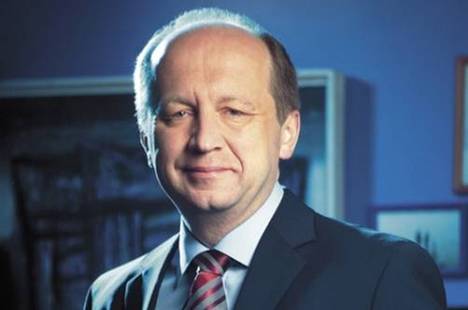
Lithuania’s Prime Minister, Andrius Kubilius.
Arrogance and ignorance are not particularly positive characteristics of anyone, and I understand it well if some of our VilNews' readers, who see that I use these words together with a picture of our Prime Minister, predict that I will now be criticising him. So let me hurry to say that these two words are meant for all questionable behaviours seen performed by our governing forces since 1990, not solely for Mr. Kubilius.
I must admit that I over the past 20 years have seen a few Lithuanian leaders whose arrogance and belief in their own excellence in some cases have prevented progression and good development for Lithuania. Still today I miss leaders who are good at listening to their own Lithuanian people, wherever in the world they may live, and I miss leaders able to inspire and be unifying figures and good examples for the nation they are appointed to serve. Leaders able to lead, not only manage.
I have also very much been missing to see our leaders seek advice from other countries and its own diasporas; to learn from mistakes and experiences these nations went through during the years when Lithuania was still under Soviet rule. Instead, time after time, we have seen Lithuanian leaders trying to reinvent the wheel.
PM Kubilius' profound measures for savings and cuts during the very serious financial crisis Lithuania still experiences, is for me an example of just that. In my opinion, the type of medicine he has been using is to compare to putting the brakes on for a car that already stands still, or closing the tap when the well is already empty.
Countries in Scandinavia and North-Western Europe have the background and resources to make cuts. Lithuania and other Eastern European countries are, after the long Soviet-era economic mismanagement, not in such a fortunate situation. Here most of the resources should have been spent on finding new fuel for the car and fresh spring water for the well.
Being a Norwegian, I believe Norway and the other Scandinavian countries would have been willing to stretch to great lengths to provide help and advice for the crisis-hit Lithuania and the two other Baltic States. But they had to be asked.
Our Lithuanian leaders should refrain from arrogance and avoid ignorance by seeking advice where good help and advice is to find, domestic and internationally. Can they do that, there is every reason to foresee a bright future for this nation.
The Lithuanian people deserve exactly that. They have suffered enough.
The airport comparison
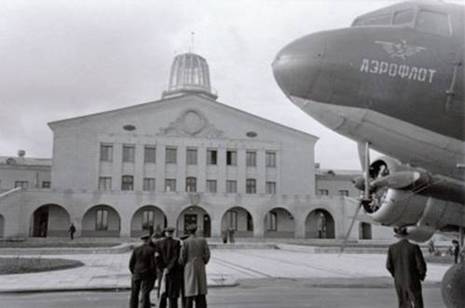
Vilnius Airport’s terminal building from 1954 was built during Stalin’s last years.
It still remains the airport’s main face towards Vilnius City.
To make my above point more understandable, I will in the following compare post-war Lithuania to Vilnius Airport. Why? Well, they have more in common than you may think; metaphorically, symbolically and representatively for what has been going on here from WWII till today.
The old airport terminal was built in the years after the war, in typical Stalin style characterised by robust constructions and materials very hard to remove. The building was completed a year after his death, in 1954. After that, the airport remained more or less unchanged through the following 40 years, with Soviet Aeroflot as the sole operator until Lithuania's independence in 1990/91.
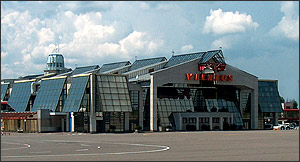
The airport was extended in the 1990s. This is the ‘monster’ that for many
years greeted (scared) airline passengers who came to visit independent Lithuania.
In the early 1990s, the airport was starving for total renewal. A public face and symbol of the now free, independent and internationally oriented Lithuania was urgently needed. The new airport should become the pride of the new democracy and an important hub for international airlines that one thought would bring hordes of visitors to the country. Not least was it estimated that the majority of the many who had emigrated to America, Australia and other countries now would move back to their homeland and contribute actively to the country’s reconstruction.
It was therefore not long before the airport management and the transport ministry chose a group of architects and other experts to travel around the world to look at leading international airports. The airport in Vilnius should be designed on a top global level. Back in Vilnius the architects drew day and night on what would become the country's new pride, and a couple of years later the 'masterpiece' was completed.
But what a tragedy. The architects and the airport authorities had in their arrogance and self-delusions of excellence thought that to visit some prominent international airports would be a good enough background for designing and building the new terminal building. They had not bothered to seek advice from international experts. The result became a new Vilnius Airport that was confusingly similar to misguided Soviet designs, and came to be viewed rather negatively as ridiculous by the international travel industry.
The 'airport monster' in Vilnius emerged not as a glorious example of a great country developing well, as it had been planned, rather as a symbol of a country where arrogance and ignorance prevented from learning important lessons from other countries.
And it's probably just here we find the most obvious similarity between the past twenty years’ development of the airport and the country's authorities; this that those at the helm have been so convinced of their own excellence that they haven’t cared to seek advice from others.
This can, of course, to a certain extent be understood, as this country through so many years was imposed to 'advices' from others that they no longer wished to accept any outside help when the new times came.
Probably that was why we in the 1990s got a parody of an airport. Perhaps this ‘blinkers mentality’ is also a contributing factor to why this country's population still suffers from the excessive and unfair tightening measures introduced by the government, rather than enjoying stimulus packages of the kind that are leading people in other countries through the crisis along a far more smooth path?
Maybe the ongoing ‘evacuation’ from this country has much of its background in such arrogant attitudes from the side of the authorities? Maybe people would like to become part of a democratic process and a national teamwork instead of being treated with arrogance and lack of interest from their own leaders?
The airport-building from the 1990s was supposed to appear as modern, as avant-garde. Those behind it were proud of their own excellence. Seen from the outside the building appeared, however, as a parody. Many of Lithuania’s leaders over the past 20 years are surely also proud of what they have achieved. But what about the people?
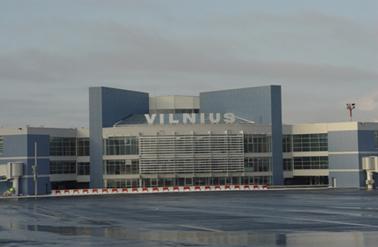
In 2007 a new extension stood ready. The previous ‘monsters’ were now hidden
behind modern materials and design. Lithuania’s face to the world had finally
reached a level of maturity, hiding many of the old sins. Unfortunately only artificially.
When the 2000s arrived it began to be understood by Lithuania’s leaders that membership in the EU would not only entail benefits, but that they also had to do something for their own part, and when the Schengen Agreement was under preparation it became clear that the Vilnius Airport had to be extended. This new construction was performed quickly and efficiently. There could be no doubt that both the country's architects and contractors had learned very much since the 1990s.
So, what characterises Vilnius Airport now in 2011?
A) The core element is still a building in Stalin Style. It is also this old building's façade that appears towards the side of Lithuania and it is on this side that the taxi drivers still do their best to cheat naïve foreigners and others. The Soviet legacy is still very solid and evident in this country.
B) On the side facing the runway and the international world, there was in the 1990s conducted an ultimately unsuccessful attempt to make a building that both functionally and symbolically should be a showcase of the proud new democracy. This travesty of a building, that so well symbolizes Lithuanian authorities’ thinking for the period 1990-2007, is now hidden between the Stalin-building and the new glass building that was completed in 2007. But the parody was not torn down, and you still have to run up and down the strange
stairs, in and out of corridors and funny corners, in a maze of steel, concrete and glass produced with Soviet
technology. What should have been a prominent symbol of the new democracy was instead made a monument of stupidity, greed and lack of transparency.
The airport in Vilnius will not function well if this section is not removed completely. Lithuania will not function well until the greed culture established by its leaders of the 1990s is totally removed.
C) In the 2000s, the building from the 1990s was tucked away between the Stalin building and a new extension that was much better adapted to modern requirements and design ideas. But also this new building is just to a certain degree characterised by measures necessary to make the airport functional and representative of modern times. To mix old and new can often be complicated. To hide old sins behind new façades is more artificial than a sign of real improvements.
So the parallels between Vilnius Airport and post-war Lithuania are quite obvious, aren’t they?
The essential question then, is obviously what is now needed to achieve real change? My opinion is that there as soon as possible should be built a new airport where neither Stalin nor the monsters of the 1990s are given space or influence. We need a solid world-class airport as a proud new symbol of a progressive country - with outstanding leaders and project managers in charge – leaders accepting neither arrogance nor ignorance, neither during the planning and construction phase nor during the operation period.
My comparison between the airport and the nation is still valid. Perhaps, now, the idea of openness and transparency, plus the ability and willingness to listen and learn from others, would not be too bad an advice?
Aage Myhre, Editor-in-Chief
aage.myhre@vilnews.com
Arrogance, ignorance or…?

Airport and hotel taxes almost killed
the tourism industry.
When Kubilius' government took over in late 2008 they decided to keep the country’s airport charges at a very high level, and to triple the VAT for hotel accommodation. The result was that several international airlines dropped Lithuania as a destination and the number of travellers and hotel stays fell dramatically. Tens of thousands lost their jobs, and the country lost much needed tax dollars.
2009 was the year when Lithuania celebrated its 1000-year name day. It was also the year when Vilnius was the European Capital of Culture. Despite those positive incentives, the number of visitors to Lithuania became far lower in 2009 than in 2008, primarily due to the government's decisions described above. In 2010, however, the airport fees are reduced considerably and the airlines are finally returning, one year late. But what a sad story isn’t this, for a whole industry and the country.
![]()
What austerity looks like
The New York Times writes about Lithuania from time to time. Their article from 2010 presents a good and balanced analysis of what's happening in our crisis-ridden country. It says that Kubilius' comprehensive savings measures now appear to give results as the decline in the economy has stopped, but the article also tells of a nation where the people are suffering more and more because of these measures:
These are two of the phrases from the article:
- “Faced with rising deficits that threatened to bankrupt the country, Lithuania cut public spending by 30 percent — including slashing public sector wages 20 to 30 percent and reducing pensions by as much as 11 percent. Even the Prime Minister, Andrius Kubilius, took a pay cut of 45 percent.”
- “The psychological toll has been immense. Suicides have increased in a country where the suicide rate of 35 per 100,000 is already one of the world’s highest, local experts say.”
You find the NYT article at: http://www.nytimes.com/2010/04/02/business/global/02austerity.html
- Bookmark :
- Digg
- del.icio.us
- Stumbleupon
- Redit it
Arrogance, ignorance & an airport comparison
- Posted by - (0) Comment

Lithuania’s Prime Minister, Andrius Kubilius.
Arrogance and ignorance are not particularly positive characteristics of anyone, and I understand it well if some of our VilNews' readers, who see that I use these words together with a picture of our Prime Minister, predict that I will now be criticising him. So let me hurry to say that these two words are meant for all questionable behaviours seen performed by our governing forces since 1990, not solely for Mr. Kubilius.
I must admit that I over the past 20 years have seen a few Lithuanian leaders whose arrogance and belief in their own excellence in some cases have prevented progression and good development for Lithuania. Still today I miss leaders who are good at listening to their own Lithuanian people, wherever in the world they may live, and I miss leaders able to inspire and be unifying figures and good examples for the nation they are appointed to serve. Leaders able to lead, not only manage.
I have also very much been missing to see our leaders seek advice from other countries and its own diasporas; to learn from mistakes and experiences these nations went through during the years when Lithuania was still under Soviet rule. Instead, time after time, we have seen Lithuanian leaders trying to reinvent the wheel.
PM Kubilius' profound measures for savings and cuts during the very serious financial crisis Lithuania still experiences, is for me an example of just that. In my opinion, the type of medicine he has been using is to compare to putting the brakes on for a car that already stands still, or closing the tap when the well is already empty.
Countries in Scandinavia and North-Western Europe have the background and resources to make cuts. Lithuania and other Eastern European countries are, after the long Soviet-era economic mismanagement, not in such a fortunate situation. Here most of the resources should have been spent on finding new fuel for the car and fresh spring water for the well.
Being a Norwegian, I believe Norway and the other Scandinavian countries would have been willing to stretch to great lengths to provide help and advice for the crisis-hit Lithuania and the two other Baltic States. But they had to be asked.
Our Lithuanian leaders should refrain from arrogance and avoid ignorance by seeking advice where good help and advice is to find, domestic and internationally. Can they do that, there is every reason to foresee a bright future for this nation.
The Lithuanian people deserve exactly that. They have suffered enough.
The airport comparison

Vilnius Airport’s terminal building from 1954 was built during Stalin’s last years.
It still remains the airport’s main face towards Vilnius City.
To make my above point more understandable, I will in the following compare post-war Lithuania to Vilnius Airport. Why? Well, they have more in common than you may think; metaphorically, symbolically and representatively for what has been going on here from WWII till today.
- Bookmark :
- Digg
- del.icio.us
- Stumbleupon
- Redit it
SUMMER SUMMARY
- Posted by - (0) Comment
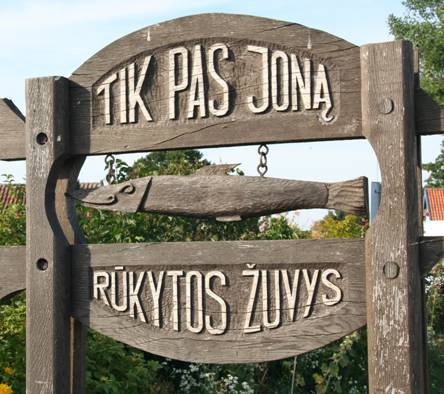
Smoked fish in Nida.
One warm August evening I stood looking out over the Baltic Sea. I stood at the pier in the seaside resort of Palanga from where I caught the above motif through my camera lens. I thought of Palanga’s two great sons, Count Tiškevičius and Mayor Šliupas, who also certainly often were looking out to the endless waves rolling towards the white sandy beaches of Lithuania’s fantastic sea coast. I felt pleased that the summer in Lithuania this year had been pretty good and warm; the summer climate here is in fact normally very good.
And I thought that maybe the summer of 2011 will be remembered as a turning point - that perhaps now again better times are coming for Lithuania and the Lithuanian people.
I wish you, dear readers, a warm and successful autumn!
Aage Myhre, Editor-in-chief
aage.myhre@Vilnews.com
- Bookmark :
- Digg
- del.icio.us
- Stumbleupon
- Redit it
- Posted by - (0) Comment
Klaipėda ruled VilNews this summer
Klaipeda city and Lithuania's coastline made the summer's top stories in VilNews. Through more than a week we put the spotlight on good and less good aspects of what is happening out there on the Baltic Sea shore. Now, in the autumn, Kaunas and Vilnius will have our attention in a similar way, and we ask you all to come up with ideas and suggestions having to do with past and present of Lithuania’s two largest cities!
We know that many of our readers were on vacation when Klaipeda was treated in our columns. A summary of the articles follows, therefore, below.

|
Sunday 17 July |
||
|
KLAIPĖDA – the jewel in the amber crown |
Friedricho Pasažas – the new wonder of Klaipėda |
|
|
History of Klaipėda
|
Mare Suebicum |
|
|
Monday 18 July |
||
|
KLAIPĖDA MAYOR:
|
Radisson Blu Hotel, Klaipėda:
|
|
|
Tuesday 19 July |
||
|
Western Shipyard – from Soviet colossus to European greatness
|
Lido Marine – a Norwegian success story in Klaipėda
|
|
|
Wednesday 20 July |
||
|
KLAIPĖDA FREE ECONOMIC ZONE:
|
Next time you eat bacalao* in Spain or Italy |
|
|
Thursday 21 July |
||
|
Klaipedos Nafta has one of the most up-to-date oil terminals in Europe
|
The port of Klaipeda
|
|
|
WITH BOTH OIL AND LNG IN KLAIPĖDA:
|
||
|
Friday 22 July |
||
|
MEMEL CITY – A NEW 'CITY' AT KLAIPEDA'S SEA FRONT
|
4 trucks full of books every week
|
|
|
Saturday 23 July |
||
|
JAMES ANDREW CLARKE:
Click here to read the article
|
KLAIPĖDA SCIENCE And TECHNOLOGY PARK:
|
|
|
Sunday 24 July |
||
|
From Suriname to Klaipėda International Business Club
|
Klaipėda – a pioneer municipality in combating violence against women
Click here to read the article
|
|
To read all articles, go to our SECTION 9 – LITHUANIA TODAY.
- Bookmark :
- Digg
- del.icio.us
- Stumbleupon
- Redit it
“You foreigners are extremely naïve”
- Posted by - (0) Comment

Plans to do business in Lithuania? It's like navigating
a boat in shallow water full of reefs.
"What you, who are born in the West, see when you come to Lithuania, are people who look like you, talk like you (those who speak Western languages) and are quite much alike you in many other aspects. But the reality is that we who have grown up in the Soviet Union or Eastern Europe have a totally different mentality than you. Even those Lithuanians who fled to the West during the war do not understand what the Soviet era has done with the mindset of us who were forced to grow up under the yoke of communism."
A Lithuanian friend told me this a few days ago. The talk began after he had expressed some surprise at how naive and gullible we from the West are when we come to Lithuania.
"You think that a word is a word, that a deal is a deal. You think that things here are going straight as in the West. You believe that what you hear is what is said, and you trust that people you meet really want and mean to do what is good, honest and correct.”
“Therefore, it doesn’t take much before you open up your cards and often reveal business secrets and other things that you should never have disclosed without first having secured your situation with contracts and local supporters, i.e. lawyers. We Lithuanians are experts in taking advantage of such situations, and we never cease to wonder how gullible people from the West often are. Even within international companies and organisations I am sometimes surprised to see how unaware western professionals are about what goes on behind their backs when they come here," said my friend.
I asked him if this mentality also means that people here do not care much about their own country, doing good for the society in addition to earning a living for themselves. "Only to a small degree," replied my friend. "It is such a difficult situation for most here that there is no additional capacity or desire to also care about the nation. Even our leading politicians do not. Most of them are much more concerned with their own interests than of the nation, and they are normally bad role models for the rest of us. So why should we do more than them?"
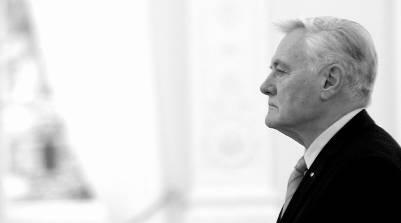
"I was born in this country. I fought for this country. I gave everything I
could, both while I lived here and after I was forced to flee to the United
States. I moved back here when Lithuania was again free, and have since
continued to do my best for this country, including through my years as
President. Yet I must admit that I feel like an outsider in my own country."
The sadness in the voice of former President Valdas Adamkus was
unmistakable as he stood and looked towards the Vilnius city through
the windows of his Presidential Palace.
I cannot fully agree with my friend. Yes, there are differences, but also so many similarities and common grounds to build on. But his statements made me think about a conversation I had with the former Lithuanian President, Valdas Adamkus, a few years ago. He was then well into his second and last presidential term, and we had a long and good conversation at his office in the Presidential Palace in Vilnius. When the conversation was over we went together out into the corridor outside his office, where the windows are facing the Cathedral and the central area of Vilnius.
My last question to the President, in that corridor, was about how close he felt he had come to the Lithuanian people after he returned from the United States in the early 1990s. This is what he answered:
"You know, Aage, I was born in this country. I fought for this country. I gave everything I could, both while I lived here and after I was forced to flee to the United States at the end of World War II. I moved back here when Lithuania again was free, and I have since continued to do my best for this nation, including through my years as President. Yet I must admit that I feel like an outsider in my own country."
The sadness in the voice of former President Valdas Adamkus was unmistakable as he stood and looked towards the Vilnius city centre through the windows of his Presidential Palace.
Aage Myhre, Editor-in-Chief
aage.myhre@VilNews.com
- Bookmark :
- Digg
- del.icio.us
- Stumbleupon
- Redit it
Vagnorkės – Talonas 20 year anniversary
- Posted by - (1) Comment
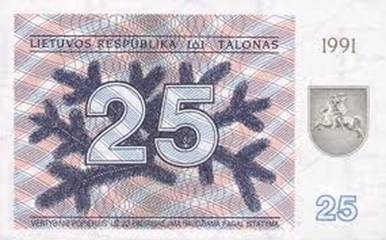
Text: Vincas Karnila, Associate editor
vin.karnila@VilNews.com
OK folks, the shoes will be 120
So that will be 80 Canadian Dollars and 80 Pound Sterling
How would you like to hear that from the cashier at you local shoe store the next time you are buying a pair of shoes? Could be a little confusing could it not? Believe it or not the people of Lithuania were hearing something similar to that in stores in the early 90s during the early days of their regained independence.
An interesting question pops up once a country gains, or in the case of Lithuania regains, its independence – What do you use for money???
With Soviet Russia’s forced annexation of Lithuania into the control of the Soviet Union, the currency of the country of course was then changed to the Soviet Ruble. Then On 11 March 1990 the re-establishment of Lithuanian independence was proclaimed and after fifty years of occupation, Lithuania was once again a free and independent republic. Obviously to be once again a free nation is a good thing but there was one factor that needed to be addressed – There was no “Lithuanian” currency!
Now of course it would be rather difficult to create a currency in one day so this could turn into a big problem in a short amount of time. So what did Lithuania do 12 March 1990? They continued to use the Soviet Ruble as there day to day currency. Now in some instances, for a country that just regained their independence to continue to use the country’s currency they just proclaimed their independence from would possibly work out OK and not present too many problems. This would be the case if the regaining of independence had taken place in a rather friendly way and as a part of a mutual agreement.
This was not the case between Lithuania and Moscow. Moscow was ticked off big time about this so every day that went by that Lithuania continued to use Moscow’s Ruble for its day to day buying and selling of things put Lithuania in a position of potential extreme financial disaster.
While the Soviet Ruble continued to be used, in early August 1991, as a response to public complaints about inflation, the Lithuanian government introduced the Talonas (Talon in English). It should be noted that the word “Talonas” is in the singular and is best translated to “coupon”. In the plural form it is “Talonai”. Prime Minister Gediminas Vagnorius spearheaded this action hoping it would work as a quick repair until a formal currency could be established.

Prime Minister Gediminas Vagnorius
At first, it worked very similar to ration coupons. Every person received 20% of their salary in Talonai, up to a maximum of 200 Talonai. In order to buy goods other than food, a person must have paid the same price in rubles and in Talonai. For example, if a pair of shoes cost 50 rubles, a person must pay 50 Rubles and 50 Talonai to buy them. Sound a little confusing? It was. Please keep in mind that people’s wages were still being paid in Soviet Rubles at this time and you were still paying for things in stores with Soviet Rubles.

This system was widely criticized. First of all, in no way it addressed the reasons why there were shortages of goods in that it did nothing to increase the supply. What it also did was make it more difficult to buy many items. As an example, the purchase of expensive goods such as home appliances dropped sharply because people needed a lot of time to accumulate the necessary amount of Talonai to buy them.
Remember you were paid 20% of your salary, up to a maximum of 200 Talonai but when you bought something, 50% had to be paid in Rubles and 50% in Talonai.

This caused bottlenecks in the supply chain and further damaged already troubled production. In addition, this scheme could not prevent the hyperinflation of the Ruble because the Talonai was not an independent currency - It was a supplementary currency with a fixed exchange rate to the Ruble. The system tried to encourage Lithuanians to save 80% of their salaries. But people accumulated their Rubles and had nowhere to spend them. It led to the inflation of goods that did not require the Talonas like food or goods on the black market.

I am told that this also created a Talonas/Ruble Black Market. Let’s say that you had a stack of Rubles sitting on the table that you could not use to buy a TV or washing machine because you didn’t have enough Talonai. So what you would do is find a person that would exchange your Rubles for Talonai. Now the exchange rate was absolutely absurd but the Rubles were doing you no good what so ever and were effectively worthless for what you wanted to use them for so the exchange rate was not a point of consideration. You were very happy to dump the effectively worthless Rubles for the amount of Talonai you needed to buy your TV, washing machine or refrigerator. Apparently the Black Market agents had a way to dispose of the Rubles outside of Lithuania in exchange for things of value.

From all this you can kind of get the idea that the “First Talonas Reform” wasn’t working out as some people had hoped it would – Please notice that I’m being very kind in my choice of words. So what would you say if I told you that even though an official Lithuanian currency was now in position to be introduced that would cure all this, the decision was made instead to enact a “Second Talonas Reform”. That’s right folks it just keeps getting better.
In the summer of 1992, everybody was waiting for the Talonas to be soon replaced by a permanent currency, the Litas. Due to Russia tightening its monetary policy, Lithuania was desperately lacking cash. In fact it was getting so bad that some workers were paid in goods rather than in cash. Even though the Litas coins and banknotes were already produced and had been shipped to Lithuania from abroad, on May 1, 1992 it was decided to reintroduce the Talonas as an independent, temporary currency to circulate alongside the ruble in hopes to deal with inflation. Yes folks this was the “Second Talonas Reform” creating again a dual currency system. On October 1, 1992 the ruble was completely abandoned and replaced by the Talonas. Lithuania was the last of the Baltic states to abandon the ruble. The self-imposed deadlines to introduce the Litas were continuously postponed without clear explanations ever being provided to the people of Lithuania.

The Talonas had some interesting names attached to it, "Vagnorkės" or "Vagnoriukai" named after Prime Minister Gediminas Vagnorius or "zoo tickets" after various animals native to Lithuania featured on the notes. The Talonas did not gain much public trust or respect. The banknotes were small and printed on low quality paper. People were reluctant to use them. Nevertheless, the Talonas served its purpose since inflation at the time was greater in Russia than in Lithuania. Inflation in 1992 rose steadily due to an energy price spike after Russia increased oil and gasoline prices to world levels and demanded to be paid in hard currency.

Now some would ask why since the “First Talonas Reform” really didn’t work out as well as hoped for – Again please take note of my kind choice of words - and why since the Litas bank notes and coins of the new official currency of Lithuania were sitting in Lithuania, would the powers to be decide to enact the “Second Talonas Reform”. Actually there were some reasons. One reason was that the banknotes were of extremely poor quality and could be easily counterfeited with a color photo-copying machine. Another reason was rather serious. For Lithuania to introduce its own currency that would be recognized internationally they needed to have a reserve equal to 200 million U.S. Dollars. This reserve could be made up of precious metal such as gold and silver and/or the currency of another country. At this point in time they could only assemble a total reserve of 120 million so they need more time to work this out.

But as the expression goes – All “good” things must come to an end. There was no “Third Talonas Reform” and on 25 June 1993, the Litas was introduced as the official currency of the Republic of Lithuania. With the Litas now in place as the official currency of the Republic of Lithuania, the people could now exchange their Talonai for Litai. The exchange rate was 100 Talonai = 1 Litas.
With this exchange of Rubles to Talonai and then Talonai to Litai two interesting things came up. First, what happened to all the now worthless Talonai that were exchanged for Litai? They were gathered all up from all the corners of Lithuania and brought to the city of Grigiškės which is near Vilnius on the A1 Highway to Kaunas. There at the Grigiškės Paper Factory they were recycled into toilet paper. I will not further comment on this but I will just allow your imagination to go to work to get an idea of all the jokes that came about as a result of how the Talonas met its final demise.
The other situation that came about was from the exchange Rubles to Talonai and it was quite unfortunate for some people. About a year ago I was visiting with some people and the topic of the Talonas came up. It was really a light hearted conversation with much laughter about all the odd things that were going on at the time as a result of the Talonas. The man of the house, who is in his 70s got up from the table and then returned a few moments later with a stack of banknotes that was about 9 inches / 20 cm. tall. I must admit that my jaw dropped when I saw this stack of banknotes sitting on the table. Then he looked at me and with an anguished smile said “worthless, all worthless”. He further added that during “Soviet Times” this would have been enough to buy six cars but now he can’t buy a potato with it. The stack of banknotes was all Soviet Rubles.
This situation was not that uncommon. What happened was that even though the people were extremely happy to have their independence and freedom from Soviet Russia some of them thought that it was just too good to be true. They felt that the possibility of a tiny country like Lithuania being able to just walk away from a world super power like the Soviet Union without any repercussions was quite unlikely. They felt that once Russia took care of their matters back home they would be back in force and once again invade and occupy Lithuania. So what some did was hold on to as much Rubles they could justify thinking that when Russia returned the Lithuanian currency would then be worthless but still they would have stashed away Rubles that they could use. In the mean time, the exchange period of Ruble to Talonai expired and they were left with a stack of worthless paper.
So the next time you think about inflation, growing petrol prices, food prices going through the roof, education costs increasing and the ongoing climb in taxes just be thankful that you can pay for it all with the same currency. Not like what the people of Lithuania had to do in the early 90s and figure out based on what day of the week it was which percent of what to use to pay for this and what percent of what to use to pay for that and how much longer can I use this to pay for that until I need to exchange these to that to pay for those.
- Bookmark :
- Digg
- del.icio.us
- Stumbleupon
- Redit it
Arvydas Sabonis to the NBA Hall of Fame
- Posted by - (4) Comment
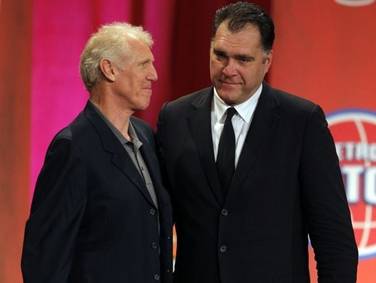
Arvydas Sabonis with ex Portland Trailblazers team
mate Bill Walton during the induction ceremonies
Photo: Reuters.
For a country that proclaims their second Religion to be Basketball, you can imagine the excitement that is growing as EuroBasket 2011 draws near. The tournament that crowns the Basketball Champions of Europe always creates great emotion in the hearts of Lithuanians but this year there is even more fuel to add to the passionate fire because the championship tournament is being held in Lithuania.
Everyone is counting the days, hours and minutes to 31 August at 9 PM EET when Lithuania plays their first game. Everywhere you look people are wearing Lithuanian Basketball T-shirts, cars are decorated in the National colors and banners and posters are everywhere.
Now what could take place that would add even more to the basketball fever that has infected everyone?
You induct into the NBA’s Hall of Fame the greatest basketball ever to come from Lithuania. Yes folks, Friday 12 August Arvydas Sabonis was inducted into the National Basketball Association’s Hall of Fame in Springfield, Massachusetts.
Said by most to be the greatest “big man” to ever play the game, he is also considered to be one of the greatest centers to play the game and some even say that he was the greatest center in the world.
Watch his induction speech here:
This video is from the induction show. Some great insight to Sabonis’ tremendous abilities and also some great action videos that displays Arvydas’ mindboggling skills. Fellow team mate and NBA Hall of Fame member Bill Walton refers to Arvydas Sabonis as a 7 foot 3 inch Larry Bird – This is quite a compliment.
- Bookmark :
- Digg
- del.icio.us
- Stumbleupon
- Redit it
- Posted by - (2) Comment
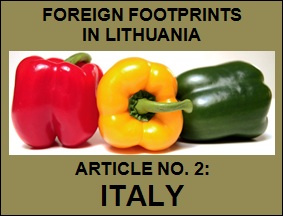
Lithuania, once Europe’s largest nation, has an amazing 700-year history as an international melting pot. This became especially evident after 1323, the year Grand Duke Gediminas founded Vilnius as Lithuania’s capital city and immediately decided to invite merchants, craftsmen, bankers, farmers, and soldiers from all Europe to come to the new capital; guaranteeing all freedom of beliefs and good working conditions. Vilnius became international, though with less of German or Scandinavian influence, as one could expect, rather influenced by Italy and Mediterranean ideas – greatly different from the other two Baltic capitals where Hanseatic influence became dominant.
VilNews will in some upcoming issues publish articles about impacts of foreign nations and cultures here. We also welcome you, dear readers, to share with us information you may have about ‘foreign footprints in Lithuania’.
Amazing Italian influence
on Lithuania since 1323

The Royal Palace in Vilnius is now being rebuilt, more or less as one expects it to have looked like in the 1500s during the rule of Grand Duke Sigismund the Old (1467-1548), his wife, Italian Bona Sforza (1494-1557) and their son, Grand Duke Sigismund Augustus (1520-1572).
Text: Aage Myhre
aage.myhre@VilNews.com
While working with the restoration of Vilnius Old Town in the 1990s – as an architect – I often got to hear that this and that building was originally designed by Italian architects. I tried to find out more, but the information I got was very fragmented, so in the early 2000s I started collecting the pieces myself, putting together my own historical survey of the Italian – Lithuanian relationship since 1323. I found that Vilnius by some was known as ‘The world’s most Italian city outside Italy’ and ‘Europe’s most Baroque city north of the Alps’. I also found the fascinating stories of how Vilnius was regarded one of the world’s leading Renaissance cities, competing with Milan and Florence. I even went to Italy myself to find traces, and was truly amazed, not least while learning about the princess of Milan and Bari who became Lithuania’s Grand Duchess. The exceptional relationship between Italy and Lithuania, which was especially evident for the period of 1300 – 1800, will never come back, but will always remain as a remarkable memory, and leave its unique hallmarks in and on Lithuania forever.
1300 – 1400:
Grand Duke Gediminas founds Vilnius and writes to the Pope


It is a myth that Rome and Vilnius both were founded by wolves, but...
It is a myth that Rome and Vilnius both were founded by wolves. But it is no myth that the Italians have put an
indelible mark on Lithuania. When Gediminas, the Grand Duke of Lithuania, in 1323 decided to put down roots in what is now Vilnius city, a Franciscan monastery was already in place – at the foot of Castle Hill where the Cathedral today is located. Since then, for hundreds of years, the spirit of Rome and Italy played a main role in the development of Vilnius and to a certain degree also of Lithuania.
No wonder that Vilnius sometimes is referred to as “the world’s most Italian city outside Italy”.
* Italy was involved in and with Vilnius already from its very first days as a capital city. Even the name Vilnius was used for the first time when Grand Duke Gediminas in 1323 – the same year he founded the city – wrote to Pope John XXII asking for support in Christianizing the Grand Duchy of Lithuania, by then one of Europe’s leading nations.


Grand Duke Gediminas and Pope John XXII.
* Gediminas invited merchants, craftsmen, bankers, farmers, and soldiers to come to the new capital, guaranteeing all freedom of beliefs and good working conditions. Vilnius became thereafter truly international, though not with much of German or Scandinavian influence, as one could expect, rather influenced by Rome – greatly different from the other two Baltic capitals.
* Early examples of Italian influence within architecture, with at least some fragments of heavy, massive walls and other elements, typical for the early Gothic period, still do exist in some Vilnius churches, among them the Cathedral, the Church of Assumption (Traku 9) and the Church of Resurrection (Didzioji 17).
* And, there is one church you really should visit if you would like to smell the 700 years of Italian influence on Lithuanian history. That is the St. Nicholas Church (Sv. Mikalojaus 4). This tiny little church was originally erected around 1320, and remains the oldest Gothic building in town, though with several changes over the centuries. But a true beauty!

St. Nicholas Church, Vilnius.
1400 – 1500:
Gothic Style, symbolized by the world famous St. Anne Church
* Young Prince Casimir (1458 – 1484) was supposed to be a Grand Duke, and also to ascend the throne of Hungary, but chose a spiritual life instead. He died of tuberculosis at an age of 25, and his remains (today resting in the Vilnius Cathedral) quickly won fame for miracles. Already in 1521, Casimir was elevated to sainthood, and canonized by Pope Leo X. He is considered the patron saint of Lithuania and Poland, and the cult of St. Casimir has left a deep mark in the history and art of Lithuania. And, of course, one of Casimir’s main teachers was Italian, the humanist Callimachus Buonacorsi, who described Casimir as a “holy youth”, and also wrote; “He should either never have been born or should have abided with us forever”.
* This was also the century when, according to the Polish historian Jan Dlugos, the legends about Lithuanian’s similarities with the ancient Romans arose – also stating that the name Lithuania derived from “l’Italia.”
* By the end of the 14th Century, the fusion of Italian and Northern European art had lead to the development of an International Gothic Style (the first Gothic style originated already around 1150, at the fall of the Roman Empire). Leading architects and artists travelled all over Europe, and also Lithuania got its part of this new Gothic wave by the end of the 15th Century, today first of all symbolized by the probably most famous structure in Vilnius, the Church of St. Anne (below) – a masterpiece nearly unsurpassed in the world - and the connected Church of St. Francis and St. Bernadine – built by Bernadine monks who arrived in Vilnius by the middle of the century.

St. Anne Church, Vilnius.
1500 – 1600:
Vilnius becomes a Renaissance capital, competing with Milan and Florence
* Throughout the Renaissance, when Italy was a trading centre and a melting pot for the world’s greatest civilisations, Vilnius also became a Renaissance centre, competing with Florence and Milan. The two great nations merged when Grand Duke Sigismund the Old (1467-1548) married the Princess of the Italian cities Bari and Milan, Bona Sforza (1494-1557), and returned to reign in and from Vilnius as the capital of the Grand Duchy of Lithuania. They created an Italian community within the court and, under the influence of the Grand Duchess, Italian culture became the preoccupation of the city’s elite; macheroni, skryliai, and even the confection marcipanus became staples among the cogniscenti; and life at court became a series of cultural events, with rich noblemen competing for extravagance.
* During the rule of Sigismund the Old The Royal Palace in Vilnius was greatly expanded, to meet the new needs of the Grand Duke – a new wing was added, as well as a third floor; the gardens were also extended. The palace reconstruction plan was probably prepared by Italian architect Bartolomeo Berrecci d Pontassieve, who also designed several projects in the Kingdom of Poland.
It was in his Vilnius palace that Sigismund the Old welcomed an emissary from the Holy Roman Empire, who came to introduce Sigismund to Bona Sforza, his second wife, in 1517.
* The education of the royal couple’s son, the later Grand Duke Sigismund August (1520-1572), was the responsibility of a Sicilian, Jonas Silvijus Amatas, between 1529 and 1537. Sigismund Augustus further developed Lithuania’s first library that his mother brought from Italy, and sent scholars and traders across Europe to assemble volumes of practical and historical value. Sigismund Augustus later took an Italian lover, Diana di Kordona. Dates are not available, but it is recorded that even at the age of 40, she had maintained her beauty and charm.
* In 1532, the Vilnius Cathedral Orchestra was performing with the Grand Duchess, Bona Sforza, singing alto!
* Sigismund II Augustus was crowned Grand Duke of Lithuania in the Royal Palace. He carried on with palace development and lived there with his first wife Elisabeth of Austria, daughter of the Emperor of the Holy Roman Empire. She was buried in Vilnius Cathedral. Sigismund Augustus’ second wife, Barbara Radvilaite, also lived in the palace. According to contemporary accounts of the Holy See emissary, the Royal Palace at that time contained more treasures than the Vatican. Sigismund Augustus also assembled one of the largest collection of books in Europe. This collection became an important part of the library that opened in Vilnius in 1570, since 1579 known as Vilnius University Library.

The Royal Palace, Vilnius.
* Sigismund Augustus rebuilt the Lower Castle and furnished it in a very luxurious, Renaissance style. It was in fact turned into a centre of Renaissance culture, boasting an excellent library, a theatre, a choir, a picture gallery, and a collection of tapestries. The castle, as well as other venues of the city, was open for masquerades and competitions, scholarly disputes and feasts. In Vilnius, the ruler kept horse-stables with two thousand horses and even something like a zoo – five bears, a lion and ten camels. The plan was prepared by several Italian architects, including Giovanni Cini da Siena, Bernardino de Gianotis Zanobi, and others. The palace was once visited by Ippolito Aldobrandini, who later became Pope Clement VIII.
* In 1562, Georges Blandrata, a physician from the University of Bologna, was installed as antitrinitoriu teoretiku (roughly, master of theoretical information) at the royal court in Vilnius.
* In 1562, Lithuania got an extremely important, firm transport link to Western Europe and Italy, when the post-route Vilnius-Krakow-Vienna-Venice opened.
* In 1569, the bishop established Vilnius College and School Theatre. A year later, its first performance was a comedy, “Hercule”, by Italian S. Tucci.
* Also in 1569, the first four Jesuits arrived, and in 1570 they founded the Jesuit College of Vilnius. It became Vilnius University in 1579, by decrees of Pope Gregory XIII and Grand Duke Stephen Bathory.
* In 1571, an Italian goldsmith, Petra Petina, was accepted as a designer of coins and medals by the Lithuanian Royal Mint, and his coins and medals produced during the reign of Stephen Bathory are considered the most significant of ancient Lithuanian coins.
* In 1584, Simonas Simonijus, a physician from Padua, conducted the first autopsy and two years later, in 1586, he published the first medical text in Lithuania.
* On the 29th of October 1579, Pope Gregory XII issued a bull acknowledging the Vilnius University, which soon became the major intellectual centre of Lithuania and North-East Europe. It is regarded as one of the oldest and most respectable universities in Eastern and Central Europe, including its extensive collection of Latin literature. The University includes twelve courtyards, whereof the Great Courtyard is the most valuable in the historical and artistic respect. It reminds an Italian Renaissance square, though it combines elements of three styles – Renaissance Mannerism, Baroque and Classicism (see below picture).

Vilnius University and the Church of Sts. Johns’
(the church’s freestanding bell tower to the right)
1600 – 1700:
Vilnius silhouette turns Baroque
* During the 17th Century, Vilnius turned more and more Baroque, in fact becoming the largest Baroque city north of the Alps, as well as the one farthest to the east.
* During this period, excellent monuments of Baroque were built, such as the Church of St. Casimir (1604-1618) – designed along the line of the famous Il Gesu Church in Rome, and St. Theresa Church (1633-50) – where the façade was designed by the Italian architect Constantino Tencalla in accordance with the models of Roman architecture. Other outstanding monuments of the Baroque period are the churches of St. Ignatius and All Saints.

The Church of St. Casimir in the centre of Vilnius.
* And do not forget to visit the Chapel of St. Casimir in the Vilnius Cathedral - one of the most artistic Baroque Mausoleums in all of Europe!
* The most exquisite Baroque monument in Vilnius, however, is the unique Church of St. Peter and St. Paul (1668-1704). Its interior décor, consisting of 2000 stucco statues, is unique in Europe. The Italian sculptors Pietro Perti, Giovanni Maria Gallia and others did the decoration works during a period of 33 years. The church was renovated in 1801-04 by Giovanni Beretti and Nicolas Piano, both from Milan.
* Around 1600, Giovanni Battista became conductor of a castle orchestra and author of many masses and motets still played.
* Along the way, scholars were going south for education, and fashions, fabrics, and music from Italy were shaping the culture of Lithuania.
* It is also really worthwhile going to Kaunas to see one of the most prominent examples of Baroque architecture in Lithuania. Go to the peninsula of the Kauno Marios Water Reservoir. The Pazaislis Church and Monastery (picture below) was started built in 1667, by Italian Camalduli monks, who were invited to Kaunas by the Chancellor of the Grand Duchy of Lithuania, Kristupas Pacas. The most striking part of the ensemble is a hexagonal dome, and two protruding towers, looking like helmets. Several generations of Lithuanian and Italian masters worked at this impressive complex until it was completed by the middle of the 18th century, but the first, and main master, was the Italian architect Lodovico Fredo.

1700 – 1800:
The Italian sculptures on the Vilnius Cathedral
* Classicism was introduced to Lithuania from Rome, where some of the most famous Lithuanian artists, architects and other performers of the fine arts were studying during this century. The famous painter Pranciskus Smuglevicius studied for example at the St. Lucas Academy for a number of years, and the architect Laurynas Gucevicius was in Rome for studies during the period of 1776-1777.
* The first appearance of Neo-Classicism came also from Rome, when the architect Carlo Spampani in 1773 came here to design the portal in the White Hall of the Vilnius University’s Observatory of Astronomy.
* In 1784, the bishop of Vilnius, I. Masalski, invited the famous Italian sculptor, Tommaso Righi, to come here for the creation of sculptures on the Vilnius Cathedral. His creations can today be seen on the western façade, in six niches where he gave life to the four evangelists, with Moses and Abraham on each of the sides.

Vilnius Cathedral.
* The Vilnius Cathedral Treasury does also contain several objects with Italian origin, worth a separate study. The treasures were so carefully hidden behind brickwork in one of the Cathedral’s niches just before the World War II, that they were discovered again only in 1985.
* Attention should also be paid to the gorgeously carved High Altar of the St. Francis and Error! Hyperlink reference not valid., created by the Italian Master Danielo Giotto by the end of the 18th century.
* Also gardens and parks were made according to Italian style. The most famous was probably the Gostauto Garden, which today mostly is covered by the Presidency Park. The original garden was made following the example of Northern Italian parks, and was said to have been one of the most beautiful, being laid out geometrically with straight radial paths, round square and regularly shaped lawns characteristic of the baroque age.
* Try also to find time for a weekend trip to southern Latvia to visit the Rundale Palace (1735-1768) near the town Bauska, 200 km north of Vilnius, supposed to be the most beautiful Baroque palace in the Baltic States, created by the author of the St. Petersburg’s Winter Palace, the Italian architect Bartolomeo Rastrelli.

The Rundale Palace
* In 1795, Lithuania lost its sovereignty, and became a province of the Russian Empire. With this, also the extraordinary and long-lasting contact with Italy vanished. The 500 year golden period had come to an end.
1800 – 1900:
St. Peter and St. Paul Church gets its final Italian touch
* The direct Italian influence on and in Lithuania disappeared more or less in the 19th Century. But also the Russian Empire had its influence from neo-styles inherited from Italy, and some examples of these styles can be found in Lithuania.
* One example of direct influence from Italian masters, also in this century, is the renovation works on the St. Peter and St. Paul Church during the years 1801 - 1804 (see also above description for the period 1600 - 1700).

St. Peter and St. Paul Church interior.
* And, do by no means miss the chance to visit Traku Voké to see the magnificent Estate of Count Tiskevicius, built in 1876 - 80 by the Italian architect L. Marconi.

The Traku Voké estate of Count Tiskevicius.
1900 – 2011:
Italian pizza, technology and fashion invades Lithuania
* More than 200 years have passed since the golden period of the Italian-Lithuanian relationship ended. Today, the relationship is being re-built, and Italy is once again well represented in Vilnius, with Embassy, Cultural Centre, a Chamber of Commerce and many different companies.
* And, as in the rest of the modern world, the streets of the Lithuanian cities and villages have in the latest years been “invaded” by Italian pizzerias, fashion boutiques and furniture stores.
* The latest 20 years has also brought a good number of Alfa Romeos, Fiats, Lancias, and even a few Ferraris, Maseratis and Lamborghinis to Lithuania.
* The Italian influence on the Lithuanian architecture is no longer very important. But there has been one exception from that; the new Italian embassy building in the district of Zverynas in Vilnius. The former Italian Ambassador to Lithuania, Giulio Prigioni, did a fantastic job during the years 2004 – 2006 in leading the renovation of a 100 year old Palladian villa into a modern building that today is Italy’s very representative headquarter in Lithuania. The renovation project was done by the Italian architect Nunzio Rimmaudo.


Former Italian Ambassador Giulio Prigioni did a tremendous job to remake
this 100-year old Paladian villa into what today is the representative
Italian Embassy complex in Lithuania.
* Lithuania’s Armed Forces spent in 2006 - 2008 €75 million to buy three units of the Italian transport aircraft C-27J. The selection was made within a bid for the renewal of the old fleet of Soviet-made twin-engine An-26s in service with the Lithuanian Air Force. The Italian-Lithuanian relationship is again flying high…


LEFT: The Italian transport aircraft C-27J, now used by the Lithuanian Armed Forces.
RIGHT: A Maserati Quattroporte recently spotted in Vilnius.
- Bookmark :
- Digg
- del.icio.us
- Stumbleupon
- Redit it
- Posted by - (3) Comment
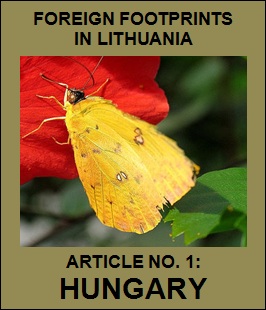
Lithuania has an amazing 700-year history as an international melting pot. This has been especially evident since 1323, the year Grand Duke Gediminas founded Vilnius as Lithuania's capital city and immediately decided to invite merchants, craftsmen, bankers, farmers, and soldiers from all Europe to come to the new capital, guaranteeing all freedom of beliefs and good working conditions. Vilnius became international, though with less of German or Scandinavian influence, as one could expect, rather influenced by Italy and Mediterranean ideas – greatly different from the other two Baltic capitals where Hanseatic influence became dominant.
VilNews will in some upcoming issues publish articles about impacts of foreign nations and cultures here. We also welcome you, dear readers, to share with us information you may have about 'foreign footprints in Lithuania'.
Stephen Báthory, the Hungarian who
became Lithuania’s Grand Duke

Stephen Báthory and his wife Anna Jagiellon were co-rulers, as the second monarch in the Polish-Lithuanian Commonwealth with the dual title ‘King of Poland and Grand Duke of Lithuania’.
You may remember our story about Anna Jagiellon (Lithuanian: Ona Jogailaitė, 1523–1596) daughter of Grand Duke Sigismund the Old and Italian Bona Sforza. In 1572, when the throne of the Polish-Lithuanian Commonwealth, at the time the largest and one of the most populous states in Europe, was vacated after her brother Sigismund Augustus died without heirs, she convinced the Polish and Lithuanian nobles to elect the French prince Henry of Valois as the new ruler. It was Jean Montluc, Bishop of Valence, who had offered the French prince to the electors of the commonwealth as the next King and Grand Duke. Montluc promised the electors that Henry would marry Anna, "to maintain the dynastic tradition". Unfortunately, for Anna, after Henry was elected as the first monarch in the Polish-Lithuanian Commonwealth, he withdrew his promise and they never wed.
In 1574 Henry left Poland to assume his new duties as King of France and by May of 1575 the Parliament of the Commonwealth had removed him as their monarch. By the autumn of 1575 a new candidate was offered to the electors, Stephen Báthory, Prince of Transylvania. Stephen had to agree to the condition that he would marry Anna, which he did.
On 15 December 1575, near Warsaw, Anna along with Stephen Báthory, her fiancé, was elected as co-rulers, as the second monarch in the Polish-Lithuanian Commonwealth with the dual title of King of Poland and Grand Duke of Lithuania. The coronation took place in Krakow 1 May 1576.

Stephen Báthory's Smocze Zęby ("Dragon's Teeth") coat-of-arms.
Stephen Báthory's position was at first extremely difficult, but some important victories in the by then ‘religious wars’ gave him a chance to devote himself to strengthening royal authority, in which he was supported by his chancellor Jan Zamoyski, who was just as skilled a politician. The two managed to win over several factions of the Lithuanian and Polish nobility, mostly by means of better taxation of crown lands and royal property leased to the nobility.
In external relations, Stephen sought peace through strong alliances. Though he remained distrustful of the Habsburgs, he entered into a defensive alliance with Maximilian's successor, Rudolf II, fostered by the papal nuncio. The difficulties with the Ottoman Empire were temporarily adjusted by a truce signed on November 5, 1577.
He ruled the Polish-Lithuanian Commonwealth only for slightly more than a decade but managed to leave prominent trace in the countries’ history. His rule, from 1575 to 1586, was marked by a series of important events such as the Commonwealth victory over Muscovy in the Livonian war and foundation of Vilnius University, both of which had direct repercussions for the Grand Duchy of Lithuania.
With his three carefully planned military campaigns against Russia from 1579 to 1581, Stephen Báthory managed to force Muscovy to denounce its rights to the conquered Livonian territories and sign a peace treaty in 1582. He also established a cannon shop in Vilnius, perfected the artillery and war engineering techniques, reorganized the army and introduced uniforms. Meanwhile, to neutralize a military threat from the south he signed a peace treaty with the Ottoman Empire and the Crimean Khanate.
To bulk up his presence in Livonia Stephen Báthory's in 1579 also deployed the Commonwealth Polish troops. Yet the decisive point in the campaign against Russia was the siege of Pskov that was eventually used by him as a trading chip in his negotiations with Muscovy. The Commonwealth received all Livonian territories that fell under its rule by the Vilnius treaty of 1561, except for the northern Livonian lands under Swedish control. Meanwhile, Russia regained the lands annexed by Poland-Lithuania in 1580. The negotiations were a success. Within three years Stephen Báthory managed to turn the fortunes of the war that seemed to go all wrong for Poland and Lithuania in particular. This was also only a part of the story. The war with Muscovy appears to be only a part of the master plan: Stephen Báthory sought to turn Russia into a dependency of the Commonwealth, use joint forces in a war with the Ottoman Empire and eventually free his homeland Transylvania.
Establishment of Vilnius University in 1579 is another prominent event associated with the rule of Stephen Báthory. While the Grand Duchy was ready to feature its own university already for some time, his decision to found a higher education establishment in Vilnius had clear political undertones. He sought to strengthen the rule of the monarchy in regards to the strong caste of noblemen. To do that he often reverted for help to the Catholic Church, a natural ally against protestant nobles.
The appearance of Vilnius University was in fact a well-planned step in a clever political campaign. It was essential for the Catholic Church to establish an educational establishment before the Reformats would do so. Thus already in 1569, Waleryan Protasewicz, the Bishop of Vilnius, invited Jesuit monks to the city of Vilnius and allocated funds to establish a Jesuit academy. The academy was opened in 1970 with an aim to become a university in the near future. The Jesuits appear to have grand plans for their school in Vilnius that went far and beyond the confines of the Lithuania. The university was to serve as a beacon of Catholicism not only in Grand Duchy but also in the neighbouring states and as far as China.
However the final steps in founding the university appeared to be far from easy. In 1577 Pope Gregory XIII issued a bull that supported the establishment of Vilnius University. Now the Bishop of Vilnius had to secure the support of the Grand Duke. Stephen Báthory granted his privilege in 1578 but that was only a part of the story. For the document to become official it had to bear the stamp of Grand Duchy of Lithuania which was in the possession of Radvila the Brown, the Chancellor of the State and a zealous protestant. The Chancellor did not grant the stamp, so the same procedure was repeated next year. This time King Stephan issued a privilege in Vilnius which was stamped by the minor state stamp of Grand Duchy of Lithuania in possession of the Vice-Chancellor. Once again, he failed to claim the support of Chancellor Radvila the Brown and had the Vice-Chancellor, also a reformist, stamp the document only after threats to take punitive measures. To make the matters complete, on 29 October 1579 the Pope issued another bull that confirmed existence of Academia et Universitas Vilnensis Societatis Iesu. Finally, Vilnius had its own university.
The rule of Stephen Báthory, however brief, undoubtedly left positive marks in the Commonwealth and Grand Duchy history. In a relatively short time he managed to solve imminent external problems of the state and strengthen its internal structures. He acknowledged Grand Duchy of Lithuania as an equal partner in the Commonwealth of two nations and heavily contributed to its further cultural development. According to contemporary panegyrics Stephen Báthory's deeds surpassed previous monarchs and can be compared only to Lithuania’s famous Grand Duke Vytautas.
His death was followed by an interregnum of one year. The Emperor's brother Archduke Maximilian, was elected King but was contested by Anna’s nephew, Swedish Sigismund III Vasa, who defeated Maximilian at the Byczyna and succeeded as ruler of the Commonwealth.
Sigismund III Vasa was King of Poland and Grand Duke of Lithuania from 1587 to 1632, and King of Sweden (where he is known simply as Sigismund) from 1592 until he was deposed in 1599. He was the son of King John III of Sweden and his first wife, Catherine Jagiellon, sister of Anna.
Anna died during her nephew Sigismund's reign, on 9 September 1596. She was the last member of the Jagiellon Dynasty that had started with Grand Duke Gediminas 300 years earlier. With her, Lithuania’s time of glory had come to an end…
Békés Hill in Vilnius

Remains of Bekes Hill at River Vilnia before it was washed away in the 1800s.
This was a hill next to the Hill of Three Crosses in Vilnius, named after Gáspár de Kornyath Bekes (1520 - 1580), a Hungarian noble who was buried on the hill which later became known as the Bekes Hill. His grave was marked by an octagonal tower, 20 meters (66 ft) high and 6 meters (20 ft) in diameter.
The river Vilnia, flowing at the foot of the hill, was eroding it until in 1838 five walls of the monument fell, and other walls went down in 1841. A small cemetery is thought to have been here in the 17-18th century, and at the beginning of the 20th century paths leading from the Botanical and Bernardine Gardens to the hill top were designed.
Bekes was treasurer for John II Sigismund Zápolya, King of Hungary (died 1571). Bekes gained considerable power and favor with the King. In his testament Zápolya, who did not have a legal heir, designated Bekes as Voivode of Transylvania. However, Hungarian nobles did not honour the will and elected Stephen Báthory as their voivode while Bekes was away on a diplomatic mission in the court of Maximilian II, Holy Roman Emperor. Supported by Maximilian, who rivaled Báthory for the throne of the Polish–Lithuanian Commonwealth, Bekes gathered his army and organized a rebellion against Báthory, but was defeated. Bekes lost all of his possessions and was forced to seek asylum with Maximilian in Vienna.
When Poland–Lithuania elected Henry of Valois as its monarch, Maximilian and Báthory ceased hostilities. Bekes unsuccessfully traveled to the Ottoman Empire seeking allies. His hopes were revived again when in 1574 Henry of Valois abdicated the Polish throne and Maximilian–Báthory rivalry resumed. Bekes, supported by Székelys, started another rebellion, but his forces were defeated in the Battle of Sinpaul in 1575. Supporters of Bekes were brutally suppressed and privileges for Székelys were suspended.
Maximilian died in 1576, and Bekes lost any hopes of reclaiming Transylvania. Instead he decided to reconcile with Báthory and became his loyal ally and close adviser despite differences in their religions. During the Danzig rebellion Bekes commanded Hungarian troops, sent to assist Báthory in establishing his control over the Commonwealth, and gained special recognition for his defense of Elbląg (Ebling). During the Livonian War against Ivan IV of Russia Bekes joined the expedition to re-conquer Polatsk (1579).
For his service Báthory assigned him Lanckorona (a village in Poland, near Kraków, today famous for its well preserved 19th century wooden houses) and other lands.
On his way to Hrodna, Poland in 1580, Bekes caught a cold, fell ill, and died later in Hrodna. His body was transported to Vilnius for burial, but none of the city's Christian cemeteries agreed to accept him because of his Arian faith. Therefore he was buried on a hill, which later became known as the Bekes Hill. His grave was marked by an octagonal tower, 20 meters (66 ft) in height and 6 meters (20 ft) in diameter. The hill and his grave were washed away by the Vilnia River in mid 19th century. The former hill territory is now within the Kalnai Park.
Royal stud of horses
in Birštonas

Hungarians started showing interest for the area of Birštonas already in the 16th century, even being rendered the rights of the district for 40 years. In these times a royal stud of Hungarian horses thrived here where River Nemunas makes its amazing loop
Panemunė Castle near Jurbarkas

Over the years 1604 - 1610 the Hungarian nobleman Janusz Eperjes
built the Panemunė Castle right here at the Nemunas River,
not far away from the town Jurbarkas.
Over the years 1604 - 1610 the Hungarian nobleman Janusz Eperjes built the Panemunė Castle on a hilltop at the Nemunas River, not far away from the town Jurbarkas (above today’s highway between Kaunas and Jurbarkas). The castle was probably built in connection with the river driving and transport of timber on the Nemunas River that started flourishing by the middle of the 16th century.
It is supposed that the name of the castle comes from the Panemunė manor, and that Petras Nonhartas, architect for the reconstruction of the Lower Vilnius Castle at that time, was the author of the castle project and the first construction supervisor. He was a friend of the Eperjes’ family.
The Panemunė castle was not built as a defense fortress; it was just a typical feudal castle with defensive equipment typical for the 17th century. The original castle was built in Renaissance style, with some Late Gothic elements. It is today considered one of the most beautiful Renaissance Epoch buildings in Lithuania. The castle was surrounded by five ponds with four water mills and some farm buildings, remaining from the old manor. A wonderful castle park with five cascade pools and a hilly relief leaves also today’s visitors with an unforgettable impression.
By the middle of the 17th century Janusz Eperjes son Christopher reconstructed the castle, introducing several baroque elements. . At the end of the 18th century the castle was reconstructed in classical style, and some of the old buildings demolished.
In 1925 the Lithuanian government made the castle a national possession and in 1935 the Panemunė Castle and its surroundings were taken under responsibility of the Lithuanian Ministry of Culture. In 1961 it was included into the list of national culturally valuable monuments. In 1995 – 1997 the castle was partially reconstructed.
Nowadays Panemunė Castle has two remaining corpuses – the western wing that includes two towers – and a southern wing. Panemunė Castle belongs to the Vilnius Art Academy, responsible for restoration and maintenance, as well as fitting it to science, education and tourism purposes. During the summer season the Vilnius Art Academy arranges expositions of art here.
Visitors are also let to climb up the towers and watch the spectacular view of the Nemunas River and the landscapes around. The nearby park is a part of the whole structure of the castle. It is a perfect example of a landscaped park that strengthens the overall impression of the Panemunė Castle on its beautiful hilltop location.

- Bookmark :
- Digg
- del.icio.us
- Stumbleupon
- Redit it
- Posted by - (1) Comment
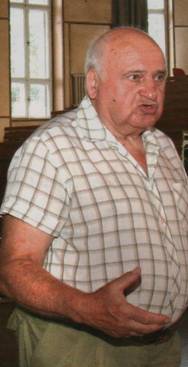 Dénes Fejér |
Ruszkik, haza!
|
Text: Aage Myhre
aage.myhre@VilNews.com
“The Szeged initiative could be seen as the first crack on a dam where water is about to pour through. Of course, you don’t immediately realise when you see a small stream of water; that what follows it is going to overwhelm you. The Communist leadership did not see right away what actually was about to happen, as they did not expect such a massive force appearing in just a few days.”
Dénes Fejér, who was 23 when the revolt started, stands here in the Aula that looks more or less the same as it did in 1956, demonstrating how things started evolving exactly here that October evening 55 years ago.
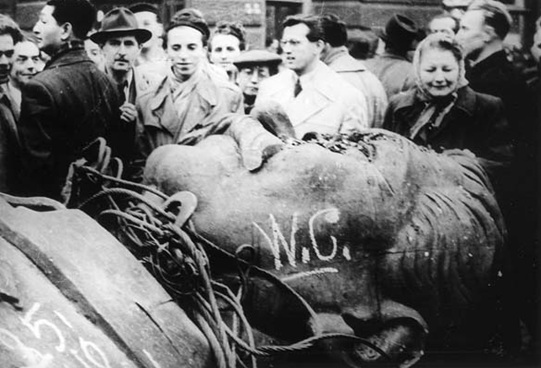
Hungarians gather around the head of the toppled Stalin Monument in Budapest 1956.
I ask Dénes Fejér to explain more about the 1956 revolt that started here in Szeged:
You were yourself present in that Aula meeting, and if I understand you correctly, this meeting became a fateful event (among several other developments in those days) which led inevitably to the outbreak of the revolution. It was the first meeting after World War II where questions were not pre-arranged slogans glorifying the regime, but where - because of the insistence of the audience - everyone was allowed to speak, and raise questions. What would you say were the most significant things happened at that assembly?
For two years after the end of the war in 1945, there was a plural political system in Hungary. Different political parties existed, and in the 1945 general elections the Independent Smallholder and Civil Party received absolute majority with 54% of the votes and the Communist Party only received 17%. Stalin realised that the people of Hungary did not want to embrace its system. The 1947 elections were already fraudulent and the Communist forces won. In 1948 the Social democratic Party was forcibly incorporated into the Communist party. The general wave of terror appeared only after this time. Forced nationalisation was started with businesses, commercial institutions, industrial entities and later, even private property like houses. A terror organisation was created within the Internal Ministry, called the AVO (State Security Authority) which later became an independent entity, having its own rules and methods.
This was the background where the MEFESZ was established, as the very first independent organisation in Communist Hungary. The programme and its demands were summarised in twenty points of the there are a few that are interesting. These included the request for open and free debates, the open trial of guilty Communist functionaries, the abolishment of death penalty in political cases, democratic elections, freedom of speech, and the that the 15th of March, the Commemoration Day of the 1848 Revolution should become an official national day. As you can see, these conditions and demands are natural in a free country but were unknown and unthinkable in a dictatorship. Although not part of the twenty points, another demand was phrased by the participant of the meeting. This was later a key phrase of the revolution: Russians, go home! The most fundamental demand was for the truth, that is to say that the leaders of the country should not lie and should not make the young people and the population lie. Telling the truth in Hungary at that time meant sever prison sentences.
To my knowledge, the assembly started as a rather innocent gathering where the students simply asked: “Why are the Soviet troops still stationed in our country?”, but ended with a the clear demand: “Ruszkik, haza!” - “Russians, go home!” From such a radical manifestation of the demands, you must have known that this was about to become dangerous?
The whole meeting started as a regular Communist youth organisation meeting. The Communist youth leaders gathered before it and reviewed the demands of the MEFESZ leaders, like András Lejtényi. When they learn the radical nature of these, they became frightened and left immediately for higher authority, the Communist party representatives at the university. Then the MEFESZ leaders went to meet the gathered students, read their demands, and the MEFESZ had the day!
“There was a general feeling of freedom among the participants. Fear disappeared. Saying the truth was a standard, normal thing during the event that caused happiness and joy among the audience.”
Didn‘t you realise that, according the Soviet system of those days, your collective name was "Shut up!" Did you not know that the Aula microphones were only for the Party collaborators and that nobody else were supposed to talk?
Nobody thought of ‘Shut up!’ at that time. After the first few words, there was a general feeling of freedom among the participants. Fear disappeared. Saying the truth was a standard, normal thing during the event that caused happiness and joy among the audience. The principle of ‘Shut up!’ had accumulated an amount of pressure in everyone that just erupted then. The age of ‘sober thoughts’ ended and the demand of freedom and truth became prevalent for the university youth.
You were yourself working as a journalist those days, and on the 23rd of October the newspaper “Delmagyarorszag” published your article called “Az igazsag keresesenek utjan”. What was the essence of this article and what reactions did you get?
This article, titled the ways of finding the truth, summarised what I have just explained above. It is very typical that we were not even sure whether the article would appear at all. The official, Communist newspaper Délmagyarország reported the event but left out the most important aspect which was the break of the dam, the shedding of the Communist oppression!
The period of hope to win over the mighty Soviet Union by peaceful measures, however, did not last long, and soon fights started spreading all over Hungary and the revolution began before your eyes. How will you describe this outcome of your efforts from the Aula assembly?
The main fighting happened in Budapest. This was the obvious and visible sign of the revolution. The fighting, the combat on the streets. The AVO, the armed troops and the Soviet soldiers were all surprised that ‘here they shoot back’. It was believed that a demonstration of force with tanks on the street would frighten people and prevent the escalation of the events, thus helping the consolidation of the Communist dictatorship. It didn’t happen like that.
Probably the Hungarian national character contributed to this as well. The courage to start again, to love one’s country, the national tradition of not giving in to slavery.
The revolutionaries of Budapest used bottles filled with petrol against tanks. They had no heavy weapons or anti-tank artillery. They fixed a burning piece of rag on the bottle and tossed it to the moving vehicle. The burning liquid turned the steel monsters into burning coffins. When the Soviet soldiers were abandoning their vehicles, they became easy preys to the weapons of the fighters.
There was an interrelation between the demands of the Szeged students, the fighting in Budapest and the revolutionary state nation-wise. The mental preparation rallied the fighters. The machine guns and the words were equally weapons of the revolution. Words changed things without bloodshed. From the smallest villages in Hungary to any institution or organisation, everyone of them had revolutionary councils. They replaced the very often incompetent previous leadership whose only added value to the system was their loyalty to the oppressing regime. The highest authority in the Communist state, the Central Committee and the Political Committee was simply dismissed. Instead of them reliable and trustworthy people were elected by the population or members of institutions or organisations. With open or secrets ballots. I was elected by a secret ballot to be on the workers’ council of the press in Szeged, and on the city’s revolutionary council.
I think this was the real result of the revolution. Replacing the old, Soviet puppets, the Communist leadership, and raising new, honest people into the power. This was created by the synergy of the students’ wishes and of the fighting in Budapest.
“For those who have never lived in oppression, in fear and in deprivation, for those who, on a daily basis, enjoy freedom and the rights of liberty, they probably don’t really know what freedom means for a prisoner.”
It has been said that something nearly supernatural stirred the hearts, minds and consciousness of the Hungarian people those days. Those shared feelings with friends and strangers must have been very special?
This special, disturbing experience is not difficult to describe for those who lived through it. The beautiful memories must be recalled from the past half-century. For those who have never lived in oppression, in fear and in deprivation, for those who, on a daily basis, enjoy freedom and the rights of liberty, they probably don’t really know what freedom means for a prisoner. I believe that it was this everlasting desire for freedom that prevailed back then. It was as if we were not even walking on the face of the Earth, as if floating in air. The communication changed among people, they were smiling to each other. They were nice, understanding towards each other. We even believed that the ‘guards’, our oppressors could change because they would realise that it is, in fact, better to live like this, free. It is probably also true that the experience of freedom created delusions.
By mid November 1956, it became evident that your revolution was lost. Not only the street fights, but also the lengthy demands of the students, which were fully supported by the whole society, were not going to be met. Instead, more and more of reprisals and arrests happened and an air of bitter disillusionment began to replace the heady days of the victorious revolution. How would you describe these days?
In the first days of November, it became obvious that the revolution had failed. Not in its results, not in its memories, not in its principles but in its survival. It was not our weakness but the overwhelming Soviet military power that defeated it. The twelve days a freedom turned into a totally different direction. In a few days we suddenly had to realise that those who had pretended to be with us till the 4th of November in 1956, turned into bloodthirsty puppets of the occupying forces and lost their human faces, becoming willing executioners.
The new puppet regime with Soviet arms behind it could only gradually strengthen its own position. They were expecting results, agreements, and waiting for their supporters t show once again. This started very slowly with the dismissed Communist leaders and members appearing again and again. Once they were feeling safe, the brutal punishment started.
We were hoping that they might have learnt their lesson, that we could not be treated the same way as we had been treated for nine years before the revolution. This was not the case, they continued everything in much the same way as it had been before. Everything came back, the deportation camps, the beatings, the prisons, the torture. Hungary again became a prison and we again humiliated prisoners.
It took some time before the Soviet rulers of your country were able to close the borders completely, and Austria was very willingly letting thousands of refugees cross into their country. You decided not to leave, why was that?
It became obvious that for those who had participated in the revolution, there was no place in Hungary any more. And many of them indeed left the country. Maybe some left because of fear, some because of adventure or new possibilities. Almost 200.000 people left the country. One of my best friend left who is currently living in New York while I was kept in a Soviet military prison in Eastern Hungary. Another friend of mine, who was briefly arrested with me, was inviting me to go to France.
It had never occurred to me that I could or would leave. Never, for a moment. I knew that I had account for all my activities eventually, and I was hoping that my life would be spared. During the revolution I did not fight, did not kill anyone. In my captivity Major Zokov, the Russian officer was interrogating me about all these things. Ha was trying to convince me that we were counter-revolutionaries while I was trying to convince him that we were revolutionaries. We couldn’t convince each other of course. I do not recall any fear gripping me, when, together with seven of my colleagues, I was transported in an ambulance, escorted by two armed armoured personnel carriers. I was wearing a white shirt and, when we were disembarked at the main square of Csongrád to be taken to the nearby hills, I remember thinking that anyone could easily recognise the white on a corpse, and might be able to inform my mother about my fate. I was not executed, but taken to Debrecen to the Soviet military airfield.
After I was released from prison, I did not want to leave. I couldn’t leave my country. I would not replace Hungary for any other place. I have seen a few peaceful spots in the world where life could be different than here. Once a Hungarian poet has said that for a Hungarian patriot ‘whether your faith may be blessed or cursed, here [ie. in Hungary] you must either live or die’. This is a moral command for me.
Some of your fellow students were executed and the Soviet jails were filling up during the next few months. You were among them arrested, hence it would be interesting to hear your personal story from the time after the revolution was so brutally crushed?
In the spring of 1957 I was arrested again, this time by the Hungarian political police. But before that an interesting episode happened in my life. When I was released from the Soviet prison, in February I returned to Szeged where I was approached by the newly organising Communist party, through two veteran leaders, Vince Bite and Károly Csíszár. I used to know Uncle Vince, since when I was ten to twelve, I used to be his helper in playing bowling at the beach. They told me to become member of the MSZMP [the newly formed Communist party] because I had been selected to be chief editor of the Délmagyarország newspaper. I had three days to consider their offer. I turned it down. Have you given it enough thoughts? Uncle Vince asked me. I have, I told him. Well, I hope you won’t regret it, he answered.
In two months time, I was arrested. I was interned. The whole thing became only a little bit clearer when I was released after one year. The temporary imprisonment that required no court verdict, could be prolonged indefinitely after every six months. When I was released, I was only allowed to do manual labour, only as a non-qualified worker, despite having a university degree with a certificate that allowed me to teach. My driving license was withdrawn, my reserve officer rank of the army was taken away, I did not get a passport, and could not travel abroad. As I recall, it did not really effect me because after finishing secondary school, I went to work on the Tisza bridge and learnt the craftsmanship of carpenters. This enabled me to work with my own two hands, and solved my financial problems.
What was difficult was the social exclusion. When my friends saw me on the streets, they went to the other side. Nobody dared speaking to me, or to be seen in the company of a convicted ‘counter revolutionary’. I was living with my mother and with my elder sister because I had lost my elder brother who had died in Russian captivity in the war.
During the sixties the terror had waned a little bit. I was allowed to teach in elementary school, although only subjects that were practical based, handcrafts. On regular basis a political officer appeared to check on me, and to try to make me work with them as an agent. I refused, and eventually got fed up with it all, and I returned to the construction industry. In the end I became a foreman, then a project manager. I was applying for eight years to the Szeged university law faculty but was always turned down. In the late 80s I was invited to be as chief editor of one of the first independent publishers. This was already the end of the Kádár-regime [János Kádár was the leader of Communist Hungary after 1956, till 1989. The period between 1956 and 1989 was often referred as the Kádár-regime.]
“It was only after many years that we learnt that the USA and the Great Britain informed the USSR that they would not oppose their intervention in Hungary.”
The governments of the free world watched your Hungarian Revolution with deep admiration even if none of them seriously considered providing military support, nor condemnation strong enough to stop the brutal actions of the Soviet Union. How do you view the behaviours of the Western countries those days?
The Western world provided enormous help to those almost 200.000 Hungarians who left the country. Those who went not as adventurers were appreciated by their new countries. Among the refugees you can find people who still come back to Hungary and who in fact, have two countries now. They have no roots, and their children have departed from Hungary for good.
The Western influence that we had in the days of the revolution was deceiving. It was only after many years that we learnt that the USA and the Great Britain informed the USSR that they would not oppose their intervention in Hungary.
Radio Free Europe was continuously encouraging the fighters to carry on because they were promised foreign help. This has led me to conclude that if it succeeds, if we had national local government in Szeged, I would suggest to change the name of Roosevelt Square in Szeged (like it was changed from Stalin Square) as I cannot support a liar, a friend of Soviets, even if he had been once the President of the USA.
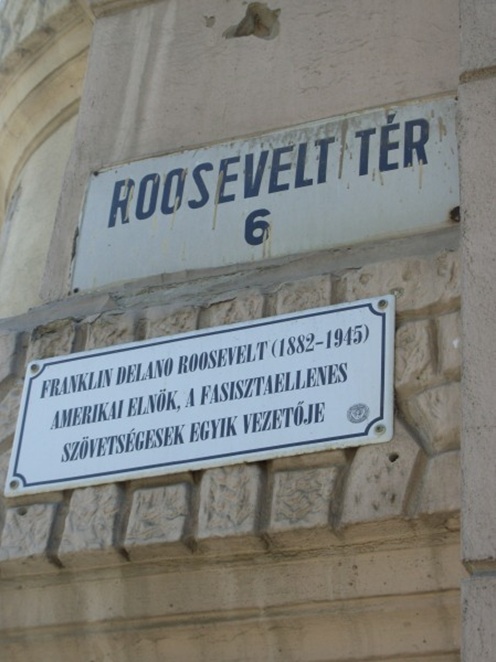
Roosevelt Square in Szeged. The inscription lauds Franklin for his stand against
Fascism. Dénes Fejér, however, wants to change the name of the square.
“I cannot support a liar, a friend of the Soviets, even if he had been once
President of the USA,” he tells me.
- Bookmark :
- Digg
- del.icio.us
- Stumbleupon
- Redit it
Thank God for Lithuania!
- Posted by - (1) Comment
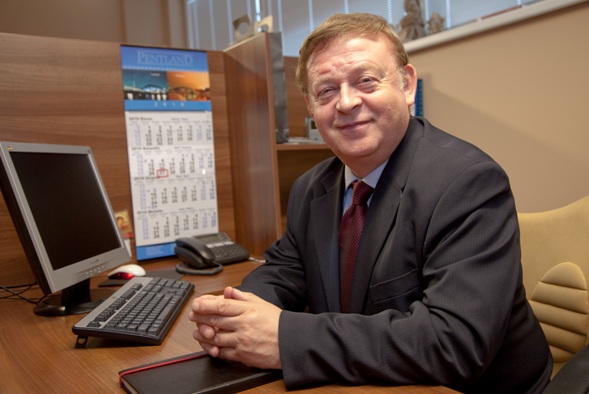
David Telky, Managing Director of Scottish-Lithuanian manufacturing company Pentland, has over 35 years in the clothing manufacturing industry. David was born in Glasgow, Scotland where he has carried on the family business of 90 years to present.
A personal thank you note to Lithuania from David Telky, Scotland
The above quote took over 30 years to occur. It covers activities in 14 countries and many years of garment production around the globe.
My background was in accountancy, but when my father, a tailor, phoned me to return to Scotland to help him start a large factory, I needed no second request.
Accountancy could not stand up to the thought of working with my father, starting a new factory and working in a manufacturing environment that had been a family trade for generations.
Two years later, after my training was over, the factory we designed was completed and my theory was to be put into practice.
To finance the project, at a very stormy time in the British economy, took every penny that we could beg and borrow but the beautiful factory was ours (and the banks) and now we had to staff and provide orders for its production.
10 eventful years later, sadly after my wonderful Father died, the factory had expanded to 450 people and was making 10,000 jackets a week, but customers were moving to overseas production, mainly from China!
This was when the stresses of running a large enterprise in Glasgow bore the health problems that many find the hardest part of business management. The long hours the mental strain of multiple problems, the financial pressures, the staff aggravations.
The answer was to do what all similar enterprises in UK were looking at and out source production, but where?
Over the next 5years,after successful forays into China, Indonesia, Sri Lanka, Turkey, Poland ,Portugal, Belarus Egypt and a few not so successful, I found the right place, Lithuania- my search was over!
The stress of all this had seen me in hospital with health problems, that linger to this day, so the expression "thank God for Lithuania ...without it I could be dead!" evolves from the joy of working with some of the best staff I have ever employed, combined with some of the finest and most loyal factories producing excellent products with an almost old fashioned loyalty and ethic that was so prevalent in the UK of my youth.
Altogether the move to Lithuania has not only been a work influenced move but the social aspect of the community of local and expats has opened my eyes to a life of harmony and peace that I thought was lost forever and fills me each day with happiness.
So Thank God for Lithuania in it's helping me develop not only a great company Pentland , a sum of it's fine employees ,but for giving me the chance to meet so many great and wonderful people not least the Editor of this fine Journal, Aage Myhre ,who I am honoured to count as my good friend .
May I say that the journal that Aage has developed tirelessly over many years is a fine demonstration of his love of Lithuania that I am proud to share with him!
Good luck to Vilnews and to you my friend Aage Myhre!
| Pentland Pentland is a Scottish based Clothing Manufacturing company headquartered in Glasgow with its production sites in Lithuania, Belarus and Moldova. Pentland has been manufacturing tailored clothing in Glasgow since 1973 and moved its production to Eastern Europe in 1985. Pentland produces for the European market for leading fashion retailers delivering tailored outerwear for men and women, with over 40 factories in Lithuania and neighbouring countries. David Telky, Managing Director of Pentland has over 35 years in the Clothing Manufacturing industry. David was born in Glasgow, Scotland where he has carried on the family business of 90 years to present. David participates hands on in his manufacturing companies from sales, production to delivery – producing fashion garments for the British and other western markets. |
- Bookmark :
- Digg
- del.icio.us
- Stumbleupon
- Redit it
The Lithuanian Picnic
- Posted by - (3) Comment
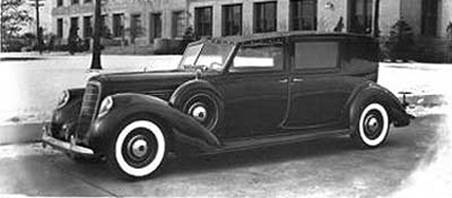
Straight-line 12-cylinder 1938 Lincoln Saloon
By KR Slade
Sunday was, as usual, the day for Father and me to go to Lithuanian Catholic mass; and, as usual, thereafter, to return to my familiar English-speaking world. Our Sunday masses were always at our Lithuanian church -- the only one between Massachusetts and Connecticut. I never had any idea what anyone at church was saying, because I did not understand any Lithuanian. In 1958, the mass was in Latin; however, the sermon, readings, singing, and announcements were in Lithuanian. I understood some Latin, although I was only ten years old. It was the ‘everything else’ -- before, during, and after church -- that I did not understand . . .
After mass, there was our weekly tradition: a couple of ‘dogs’ at the ‘New York System’ wiener-joint, just around the corner from the church, in the old inner-city Lithuanian neighbourhood; then a drive across town to the Italian bakery for a box of pastries to take to Mother’s parents’ house for an hour or two of ‘Sunday visit’.
It was not until we were at home that Father announced the news: next Saturday was to be the first-of-the-summer-season Lithuanian picnic. Mother’s reaction was that this was going to be a lot of work for her: to prepare all of the food, for the three of us and more to share. I thought that it would be great: lot’s of other kids, to meet and play with, none of whom spoke anything but English. We all would ‘goof’ on all of the adults trying to speak Lithuanian, which the adults did not know very well, had forgotten, would be corrected, and would argue about. They would be so language pre-occupied as to leave us kids alone, for us to have our fun . . .
Next Saturday, Father’s old -- but still impressive, straight-line 12-cylinder 1938 Lincoln Saloon’s huge trunk compartment was picnic-packed. We rolled out of our driveway.
“Tom. There will be swimming, of course. Did you bring your swimming trunks?”
“Yes.”
(Mother): “Well, I hope that it’s going to be at the big lake, the water is good there. That other picnic place -- with the big pond is okay; but that other picnic place, with the little pond -- I don’t want Tom swimming there. I think that there are leeches there. So, which picnic ground is it ?”
That’s when Father stepped on the brakes, more notable an event because we were going up a hill.
“Ohh . . . ”
“Which picnic ground is it ?”
“Ohh . . . ”
“Which picnic ground is it ?”
“Well, . . . ”
“Don’t tell me that you don’t know.”
“Okay.”
“Which picnic ground is it ?”
“We’ve been there.”
“Which picnic ground is it ?”
“It’s not a problem. We will see. Everything will be okay. We will just go to the church.”
“It is eleven o’clock. The picnic is at noon. It is an hour’s drive to any of the three picnic grounds. The church is a half-hour away; the other way.”
“It’s OK; we will go to the church; and we will see.”
“What we will see is nothing; because everyone will have already left.”
“Well, we will go to the church, and we will see.”
We went to the church . . . ‘to see’ . . . and we saw nothing. Any idea of posting a notice as to where/what/when or anything about the event, was an unknown concept [both then and thereafter, and probably in the hereafter and forever]. No need to tell: ‘Everyone knows’.
We drove around the neighbourhood of the church. Father reasoned that there would be someone knowledgeable of the precise details of the event, although unable/unwilling to attend. Of course, since we were passing the New York System Wieners, we were obliged to stop for ‘a couple of dogs’, on the pretence of getting information. Mother waited in the Lincoln, with the doors locked and windows rolled-up. Somehow, she noticed the tiniest touch of mustard, and made me take-off my T-shirt.
We drove around the neighbourhood, looking for addresses. After knocking on six doors, he did find one person who knew the correct location. Now we knew which picnic ground: the one with the big lake.
From my spacious backseat of the Lincoln, a limousine-distance away from the front seat, I could see my father chain-smoking, and it seemed like smoke was coming from my Mother’s ears. However, the Lincoln leather seat soon became uncomfortably hot on my bare back, so I took to sitting on the thick-wool rugged spacious floor. Father kept a very clean car. The long drive encouraged me to change positions frequently. Positioning my feet on the back of Father’s seat was not such a good idea, because at a traffic light stop, his huge bear paw of a hand reached over and behind and caught me on my right calf, which encouraged me to find other positions. That was when I understood what was going to be the mood of this family outing.
We arrived at two o’clock: two hours late. However, there was no one there. Father praised the solitude of the lakeside forest; Mother was silent -- still-more smoke from ears, still makes no sound, but makes for a more profound stillness. We ate our picnic, in Silence.
We had too-much food. Mother was not particularly hungry. Father had a seemingly larger than his large-normal appetite. I was a tall, but skinny, kid; I never ate much; and Father kept urging me to eat more. However, after the over-eating, there was still too-much food.
A couple of other picnicking families arrived, around the lake. Father gathered up the excess food, and he and I carried it off on a give-away mission. The first family was Polish; Father spoke with them for a long time in their language; they had plenty of food and did not want any more; they gave us some great homemade pickles; Mother was not pleased that we returned with more food. The second family was Jewish, and kosher; so, it was not opportune to offer our pork-laden gifts; but Father had a long talk with them in Yiddish and Russian, and they gave us some nice sweet bread. Mother was more displeased with the more food. Father and I set-off on a walk around the lake, where we ‘lost’ our gift-food. For the resident squirrels and other creatures, it must have been a day of bonanza.
I mentioned swimming. Mother said that I could not swim alone. Father said he would swim with me. Then he remembered that he had forgotten his swimming trunks. My parents had a short discussion.
“It’s okay. I will swim in my underwear.”
“No; you will not.”
It was time to leave. We packed our residue picnic paraphernalia into the trunk of the Lincoln.
Three busses of Lithuanians arrived, from our church. Evidently, the picnic was to be at 3:30 pm.
Everyone was very cordial, but there were the inevitable questions, totally understandable, directed to my mother.
“Why did you not wait to eat with us ?”
“Why did you not bring food to share with others ?”
“You did not cook ?”
In very-good Lithuanian, Mother responded to the Lithuanian-language questions, saying, “I do not speak Lithuanian-language”.
Unfortunately, the bus ride had been long, and this early-summer day was very hot. The Lithuanian taste for milk-products was not suitable to this especially hot summer day. Personally, I do not like beets, especially in soup, more-especially with cream. Mother continued her day’s fasting; I did not want to eat more; even Father had over-eaten.
And it came to pass, that the three busloads of Lithuanians became ill; violently ill -- with some sort of great stomach distress. Father drove to find a telephone to call a hospital. Three ambulances arrived. The one doctor examined people.
One of the ambulance drivers was German, and was somewhat naturally attracted to the ‘borscht’ soup -- with the cream, on the sunny picnic-buffet. His workday ended, and his ambulance was soon to become abandoned. It was strange to see the doctor driving one of the three buses -- all to the hospital.
We drove home in the Lincoln. Mother said nothing. Actually, she said nothing for about a week, which was the same amount of time that Father slept in the guest room. Maybe it would not have been so bad if on our way home Father had not said, “As I told you, everything will be okay; we will see.”
I had a great time at the picnic; well, at least before everyone else ate, and before I experienced ‘sympathetic vomiting’. There were lots of other kids to play with; and there was good swimming. I met a cute Lithuanian girl, although she was two years older. I told all of the kids the story of how we came to our Lithuanian picnic; they all laughed. She told me, “You tell good stories.” I became more interested in going to Sunday mass. Five years later, she was my date at my Freshman Prom.
“Everything will be okay; we will see.”
The foregoing article is ‘fiction’, an excerpt from “T.F.”. Then again, maybe it is a ‘fiction’ to say that it was ‘fiction’; you can never know with ‘fiction’ . . .
All Rights Reserved: 2006
Note: A version of the foregoing story was published in the October--November 2006 issue of the Canadian subscriber's journal, 'Dialogue' magazine (www.dialogue.ca)
- Bookmark :
- Digg
- del.icio.us
- Stumbleupon
- Redit it
- Posted by - (5) Comment
Lithuanian footprints
|
|
|
|
Bona Sforza (1494-1557), Grand Duchess of Lithuania, Queen of Poland, Duchess of Bari and Princess of Rossano, left the Royal Palace in Vilnius after her husband Grand Duke Sigismund the Old died in 1548. She stayed eight years in Poland and then went to Bari in Southern Italy to claim a sizeable dept from King Philip II of Spain. But instead she was poisoned by her trusted officer, Gian Lorenzo Pappacoda, acting on behalf of King Philip. She was buried in St. Nicholas' Basilica in Bari, where her daughter Anna had a beautiful tomb made in the current Renaissance style for her remains (above, left).
See also: https://vilnews.com/?p=1652
CAPE TOWN, SOUTH AFRICA
|
|
|
Dr. Mendel Kaplan (1936-2009), steel magnate, writer and philanthropist, whose family emigrated from the town Rietavas (near Klaipeda) in the 1920s was called "the father of the South African Jewish community," also very much involved in the establishment of the South African Jewish Museum in Cape Town, a museum that appears more Lithuanian than Lithuania itself. Walking through the museum's cellar floor is like walking through Rietavas in year 1900.
Read more at: https://vilnews.com/?p=1703
DELHI, INDIA
|
|
|
Professor Lokesh Chandra (84), one of India's leading experts on Sanskrit and Buddhism, tells me this early morning in his New Delhi office: "The very mention of Lithuanian opens up an image, a vision that gives a people their identity through language. It shows how the darkness of dreams becomes the new embodied hope. My father was stimulated and strengthened in his work on the development of Hindi by the history of Lithuanian language. It has been the eternal continuity of these people; - it rustles something deep in their being. My father felt that we in India share with our distant Lithuanian brothers the silent geography of lost frontiers. Political freedom is inseparable from language."
And the professor continues his amazing story: "My father would relate how grandmas in the remote villages narrated folk-tales to eager grandchildren in their Lithuanian language which was despised by the Slavised nobility and punished by the Czarist regime. My father also told me how the Lithuanian daina (songs) were abandoned by the courts, but still continued to live on in the villages, faithfully preserved by the poorest people of Lithuania, guarded by the mothers of the families even during the darkest periods of Lithuania's history."
"Such was my first contact with Lithuania, in 1937, at an age of ten," smiles Professor Chandra this early Delhi morning.
Read more at: https://vilnews.com/?cat=18&paged=2
BOGOTÁ, COLOMBIA
|
|
|
Antanas Mockus (his full name is Aurelijus Rutenis Antanas Mockus Šivickas) was born 25 March 1952 in Bogotá, Colombia. His parents were Lithuanian immigrants. He is a mathematician, philosopher, and politician. He was mayor of Colombia's capital, Bogotá (population more than 7 millions), for two terms, during which he became known for springing surprising and humorous initiatives upon the city's inhabitants. These tended to involve grand gestures, including local artists or personal appearances by the mayor himself — taking a shower in a commercial about conserving water, or walking the streets dressed in spandex and a cape as Supercitizen. The impact of Mockus on the development of Bogotá is described in a documentary film released in October 2009 with the title CITIES ON SPEED - Bogotá Change.
ARCTIC & SPACE
|
|
|
Mikalojus Konstantinas Čiurlionis (1875-1911), Lithuania's national painter and composer, has a mountain and an asteroid named after himself. In 1913 on an expedition through the Arctic ocean a painter N.Pinegin turned his attention to a plateau in the Franz Josef Land archipelago, which resembled M.K.Ciurlionis' painting "Stillness" (above). So he called it the Ciurlionis Mountain. In1975 the Crimean astrophysicist Nikolaj Cernych discovered a new 8 km diameter asteroid and called it the Ciurlionis asteroid. It orbits round the Sun in approximately four years (average distance from the Sun: 384 mln. km).
LITVAKS (LITHUANIAN JEWS) IN ISRAEL AND THE U.S.
|
|
|
|
Benjamin Netanyahu, Jon Stewart and Bernanke – prominent world Litvaks. Jews of Lithuanian origin are today in leading roles and positions around all the world – some of our nowadays most famous politicians, scientists, businessmen, economists, actors, writers and singers...
Read more at: https://vilnews.com/?page_id=152
FBI – WASHINGTON, USA
|
|
|
Alexander Bruce Bielaski (1883-1964) was born in Montgomery County, Maryland by Lithuanian emigrant parents. He received a law degree from George Washington University in 1904 and joined the Department of Justice that same year. Like his predecessor Mr. Finch, Mr. Bielaski worked his way up through the department. He served as a special examiner in Oklahoma where he "straightened out the court records" and aided in the reorganization of Oklahoma's court system when the Oklahoma territory became a state. Returning to Washington, Mr. Bielaski entered the Bureau of Investigation and rose to become Mr. Finch's assistant. In this position he was in charge of administrative matters for the Bureau.
At the end of April 1912, Attorney General Wickersham appointed Mr. Bielaski to replace Mr. Finch. As chief, Mr. Bielaski oversaw a steady increase in the resources and responsibilities assigned to the Bureau.
After leaving the Bureau in 1919, Mr. Bielaski entered private law practice. According to The New York Times, while on a trip to Cuernavaca, Mexico in 1921, Mr. Bielaski was kidnapped. He escaped three days later, saving himself and the $10,000 gathered to rescue him.
Mr. Bielaski worked undercover as a prohibition agent operating a decoy speakeasy in New York City. From 1929 to 1959, he headed the National Board of Fire Underwriters team of arson investigators. In 1938, Mr. Bielaski served as president of the Society of Former Special Agents. He died in February 1964, at the age of 80.
- Bookmark :
- Digg
- del.icio.us
- Stumbleupon
- Redit it
- Posted by - (1) Comment
Chronicle of Lithuania
in a global perspective
Lithuania is a country that cannot be understood if you don’t know at least
something about its exceptional past and its extraordinary global ties – with
Italy, India, South Africa, Israel, Poland, Belarus, Ukraine, Crimea/Turkey,
Sweden, Germany, Russia, Australia and America
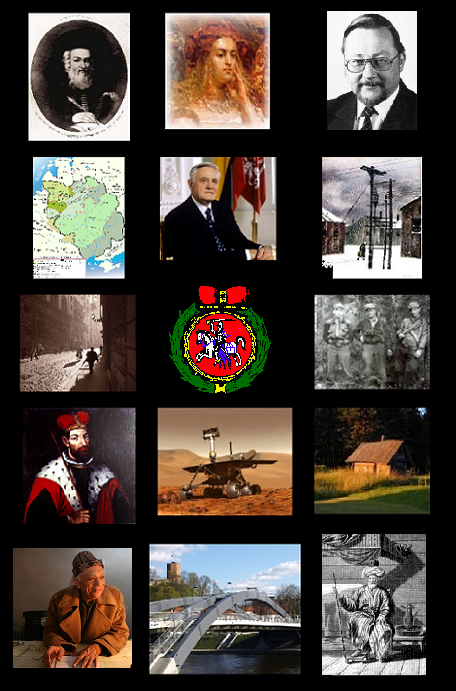
LITHUANIA - IN A GLOBAL PERSPECTIVE
A Chronicle of historic and contemporary Lithuania and her relations to the world
See also: https://vilnews.com/?p=886
I have, over the years since I first came to Lithuania from my native Norway in 1990, often wondered why authorities or other institutions here haven’t published a chronicle describing the many ties and touching points this amazing country has to the rest of the world throughout historical and modern times.
Because Lithuania is a country that cannot be understood if you don’t know at least something about its exceptional past and its extraordinary ties with Italy, India, South Africa, Israel, Poland, Belarus, Ukraine, Crimea/Turkey, Sweden, Germany, Russia, Australia and America.
This was why I some years ago put together my own electronic ‘Chronicle of Lithuania in a global perspective’. that I often have used for presentations to guests and others with some interest in this little country that once was a ‘superpower’ of world class and for hundreds of years a thriving cradle for co-existence between people from many nations, cultures and religions. Or, as the British historian Norman Davies puts it: “Lithuania was a haven of tolerance”. Davies was not the only one who took notice of this. Erasmus of Rotterdam (1466 – 1536) is quoted as stating; “I congratulate this nation [Lithuania] which now, in sciences, jurisprudence, morals, and religion, and in all that separates us from barbarism, is so flourishing that it can rival the first and most glorious of nations.”
I know that foreign embassies and international companies, as well as many individuals, for many years have been using my ‘chronicle’ when they try to describe Lithuania to people and institutions in other countries, and I also urge you, dear readers, to pass on a link to this 'chronicle' to all your friends and acquaintances. That’s how we together can make Lithuania better known and understood for people around the globe...
Please keep in mind, however, that this is my personal collection of articles and impressions, not in chronological order, hence it might very well be that a historian would have chosen other articles and put together the information in a completely different manner. Nevertheless; have a good read. I believe afterwards you will agree with me that Lithuania is a truly amazing and far too little known spot on the world map!
Aage Myhre, Editor-in-Chief
TOPIC 1:
Lithuania’s peaceful fight for new freedom 1988 – 1991
The little stroke that fell the great bear and opened for the new era of a united Europe
|
|
|
|
Funeral of the victims of the 13 January 1991 Soviet attacks on Lithuania.
|
Professor Vytautas Landsbergis, January 1991. |
"Lithuanians, do not resist, your government has deceived you. Go home to your families and children."
This was the repeated announcement from the Soviet military ‘sound trucks’ rolling through the streets of Vilnius in January 1991. But luckily for Lithuania and for the new united Europe we today take more or less for granted, there was a music professor and a complete little nation that wanted it all differently. Hadn‘t it been for this peaceful fight for regained freedom against an occupation and a ruling the people of the Baltic States never wanted or agreed to, the map of Europe would most likely have looked very different today...
If there were those in the West who hadn’t heard about Lithuania before, they almost certainly had by the end of the day, 13 January 1991. That was the day Soviet troops cracked down in Vilnius and the resulting bloodshed made headlines around the world. The action was apparently a bid to stop Lithuania’s independence drive in its tracks. By the time the firing stopped and the smoke cleared, more than a dozen people lay dead, and hundreds more were injured. The crackdown, and particularly the killings at the TV tower, not only brought fame and sympathy to Lithuania from around the world, it was also a defining moment for Lithuanians themselves.
The bloodshed meant they had crossed a point of no return. If there was ever any notion of reconciling with Moscow, it was now unthinkable. For those watching from abroad, Vytautas Landsbergis was the central player in the drama unfolding in Vilnius. The colourful, quick-tempered music professor became Lithuania’s president (or chairman of the Lithuanian Supreme Council) in 1990 and, from that time on, his name became almost synonymous with the Lithuanian independence movement. His blunt talk about breaking free of the Soviet Union and about Lithuania’s moral right to be able to do so startled observers in the West almost as much as it infuriated the Kremlin.
See also: https://vilnews.com/?p=3642
TOPIC 2:
South Africa, home to 70.000 Lithuanian Jews


|
|
|
|
“This postcard was the last sign of life my father had from his father. It was sent from my grandfather’s home here in Kupiskes (North Lithuania) in March 1941 to my father’s new home in Pretoria (South Africa), but my grandfather was most probably already dead when the postcard reached Pretoria late summer 1941. He was killed by the Nazis”.
Attorney Ivor Feinberg, Lithuania’s consul in Pretoria, is obviously very touched when he visits his grandfather’s house in Kupiskes, telling us about the last memory of his grandfather – a memory not unlike many other stories related to the about 70.000 Jews of Lithuanian descent living in South Africa.
|
|
Lithuanians dominate the Jewish community in South Africa to an extent seen in no other country, even their former home. "We have around 80.000 to 90.000 Jews in South Africa, and about 80 percent of them are of Baltic descent, most of them from Lithuania," saYS David Saks, an historian and researcher at the Jewish Board of Deputies in Johannesburg. "We probably have the most 'Lithuanian' Jewish community in the world," said Saks, whose own grandparents came from Lithuania.
This ratio even exceeds that of Lithuania itself as most of the Baltic State's small Jewish community, now numbering a mere 5.000, is comprised mostly of immigrants who arrived from different parts of the Soviet Union after World War Two.The war devastated Lithuanian Jewry, once a leading centre of Jewish thought and culture. Historians estimate that 94 percent of the country's pre-war Jewish population of 220.000 perished in the Holocaust. The capital Vilnius, once known as the Jerusalem of the North, was home to a thriving community of 60.000 Jews, with more than 90 synagogues and the biggest Yiddish library in the world. Aside from one functioning synagogue, few traces of its rich Jewish past remain.
"South Africa is more Litvak than Lithuania itself...we see our culture and society have been preserved there," says playwright and novelist Mark Zingeris, one of the few Litvaks remaining in Lithuania.
See also: https://vilnews.com/?p=1703

































TOPIC 3:
Italy’s extraordinary, little known role in Lithuania
|
|
|
|
|
Sigismund the Old |
Bona Sforza
|
The Royal Palace – once again being rebuilt |
When Lithuania’s Grand Duke Sigismund the Old in 1518 married the Italian Princess Bona Sforza, this became another outstanding manifestation of the already strong relationship between Italy and Lithuania.
The royal couple created together an Italian community within the court and Italian culture became the preoccupation of the Vilnius city elite. Macheroni, skryliai, and even the confection marcipanus became staples among the cogniscenti and life at court became a series of cultural events, with rich noblemen competing for extravagance. During the rule of Sigismund the Old the palace was greatly expanded, to meet the new needs of the Grand Duke and Duchess. Another wing was added, as well as a third floor and the gardens were also extended. The palace reconstruction plan was probably prepared by Italian architect Bartolomeo Berrecci da Pontassieve.
The Royal Palace – that now again is being rebuilt – was remodelled by Bona Sforza and Sigismund the Old in Renaissance style. The plans were prepared by Italian architects, including Giovanni Cini da Siena, Bernardino de Gianotis Zanobi, and others. Among the many visitors to the Palace was Ippolito Aldobrandini, who later became Pope Clement VIII, also this emphasizing the extraordinary connections between Italy and Lithuania that lasted for hundreds of years – also giving background for the saying that ‘Vilnius is the world’s most Italian city outside Italy’.
Throughout the Renaissance, when Italy was the leading trading centre and a melting pot for the world’s greatest civilizations, also Vilnius also became a leading Renaissance centre of world class, competing only with Florence and Milan.
See also: https://vilnews.com/?p=2927 and https://vilnews.com/?p=1652
TOPIC 4:
The Lithuanian-Americans, a nation outside the nation
|
|
|
|
Ex-President Valdas Adamkus is today’s most famous US-Lithuanian
|
Distribution of Lithuanian-Americans according to the 2000 census |
Many Lithuanians immigrated to the New World before the American Revolution. The first may have been a Lithuanian physician, Dr. Aleksandras Kursius, who is believed to have lived in New York as early as 1660. Most of the other Lithuanians who ventured to the Americas during this period were members of the noble class or practitioners of particular trades. But the first really significant wave of Lithuanian immigration to the United States began in the late 1860s, after the American Civil War. During the late nineteenth and early twentieth centuries, an estimated 300,000 Lithuanians journeyed to America. A flow that was later halted by the combined effects of World War I, the restriction of immigration into the United States and the achievement in 1918 of Lithuanian independence.
The second wave of immigration had a greater impact on U.S. census figures. Following World War II, a flood of displaced refugees fled west to escape the Russian reoccupation of Lithuania. Eventually 30,000 Dipukai (war refugees or displaced persons) settled in the United States, primarily in cities in the East and the Midwest. These immigrants included many trained and educated leaders and professionals who hoped to return someday to Lithuania. The heightening of tensions between the United States and the Soviet Union—known as the Cold War—dampened these expectations, and many Lithuanians sought to create a semi permanent life in the United States. By 1990 the U.S. Bureau of the Census listed 811,865 Americans claiming "Lithuanian" as a first or second ancestry.
The main areas of Lithuanian settlement in the United States included industrial towns of the Northeast, the larger cities of the Northeast and the Midwest, and the coal fields of Pennsylvania and southern Illinois. According to the 1930 census report, only about 13 percent of Lithuanians lived in rural areas, and even fewer—about two percent—were involved in agriculture. Nearly 20 percent of all Lithuanian immigrants settled in Chicago alone. Throughout the twentieth century, Lithuanian Americans began to climb up the economic ladder and gain an important place in their local communities. This mobility allowed them to enter the American mainstream.
Two important developments in Lithuania led to the growth of a strong Lithuanian American ethnic identity: the late nineteenth-century rise of Lithuanian national consciousness and the achievement of Lithuanian independence in 1918. Lithuanian Americans were staunch supporters of their newly independent homeland during the 1920s and 1930s, and some even returned to assist in the restructuring of the country's economy and government.
The post World War II wave of Lithuanian immigrants—the Dipukai—also experienced a surge of Lithuanian consciousness. These later immigrants saw themselves as an exiled community and clung to their memory of two decades of freedom in Lithuania. They developed an extensive network of schools, churches, and cultural institutions for the maintenance of Lithuanian identity in the United States.
|
FAMOUS AMERICAN-LITHUANIANS (there are many more) |
||||||
|
The very first FBI Director, 1912-1919 |
Al Jolson (1886-1950) Singer and Entertainer |
(1921 – 2003) Movie Star |
Marija Gimbutiene (1921-1994) Archeologist
|
Birute Galdikus (1946 - ) Anthropologist, world leading authority on orangutans |
Dr. Juozas P. Kazickas (1918 - ) Business entrepreneur |
|
See also:
TOPIC 5:
Lithuania and India - same language root and more…
|
|
|


 Pictures: Aage Myhre
Pictures: Aage Myhre
It’s early morning in Delhi, India. I have been invited to the small, dark office of Professor Lokesh Chandra, one of India’s leading experts on Sanskrit and Buddhism. “The same year I was born, 1927, my father went to London to get a degree in Lithuanian language. He spoke the language fluently, but he never visited Lithuania”, tells the elderly professor, still with his Kashmir coat and cap on, despite the outside temperature of close to 300 Celsius. And I soon learn that the professor’s knowledge about the connections between Old Sanskrit and the Lithuanian language and ancient cultural ties between India and Lithuania is nothing but amazing…
It is a common belief that there is a close similarity between the Lithuanian and Sanskrit languages; Lithuanian being the European language grammatically closest to Sanskrit. It is not difficult to imagine the surprise of the scholarly world when they learned that even in their time somewhere on the Nemunas River lived a people who spoke a language as archaic in many of its forms as Sanskrit itself. Although it was not exactly true that a professor of Sanskrit could talk to Lithuanian farmers in their language, coincidences between these two languages were truly amazing, for example:
Sanskrit sunus - Lithuanian sunus; son Sanskrit viras - Lithuanian vyras; man
Sanskrit viras - Lithuanian vyras; man
Sanskrit avis - Lithuanian avis; sheep Sanskrit dhumas - Lithuanian dumas; smoke
Sanskrit dhumas - Lithuanian dumas; smoke
Sanskrit padas - Lithuanian padas; sole
We can assert that these Lihuanian words have not changed their forms for the last five thousand years!
Read also: https://vilnews.com/?p=4425 and https://vilnews.com/?p=4434
TOPIC 6:
Lithuania turned 1000 years in 2009!
"In 1009 St Bruno, who is called Boniface (Bonifatius), Archbishop and monk, in the second year of his conversion, on the border between Russia and Lithuania (Lituae), having been hit on the head by the pagans, and his 18 men went to heaven on the 23rd of February. "There are several sources that mention the event - the killing of the missionary but they refer to Prussia rather than Lithuania, which proves that both Germans and Poles did not know about the existence of Lithuanians then. They thought that Prussians were the only Balts (or the majority of Balts). Quedlinburg Annals mentioned Lithuania because they were keen on precision and the information was received from St Bruno's entourage. The story about St Bruno describes the political organisation of Lithuanians, which was peculiar and not characteristic of other Baltic tribes before the 13th century.
TOPIC 7:
Modern Lithuania in a new Europe
|
|
Lithuania has shown an impressive performance since its liberation from the USSR. The world recession was, however, hitting very hard, and there is now acutely necessary to search for new growth resources. A new growth cycle of the economy should focus on incentives and promotion of higher-quality high-tech industries, through R&D support, high-tech industry incubators, and appropriate educational focus.
The general strengths of Lithuanian national innovation system lies in the well developed and continuing its academic tradition higher education sector with strong science and technology research tradition and engineering orientation.
This results in a relatively high share of the population with tertiary education, high numbers of S&T graduates among them, and cultural orientation of the younger generation towards higher education. However, restricted resources for R&D and the higher education sector combined with the growing numbers of students at all higher education levels doubts the quality of education, especially in areas where technological based education is significantly important. Also low or non existing investments of businesses in vocational training lead to obsolete qualifications not suitable for high tech high skill work. The weak links between business and higher education and R&D communities result not only in obsolescing qualifications of the highly educated labour force, but also in low value added innovations, developed without input from the R&D sector.
TOPIC 8:
Karaims and Tatars - Turkish nationalities in Lithuania
|
|
|
|
Typical Karaim house in Trakai, 30 km from Vilnius city. |
A senior Tatar Muslim cleric (akhund) |
Since the 14th Century two Turkish nationalities – Tatars and Karaims – have been living in Lithuania. From linguistic and ethno genetic points of view they belong to the oldest Turkish tribes - Kipchaks. This ethnonym (Kipchak) for the first time was mentioned in historical chronicles of Central Asia in the 1st millennium BC. Anthropologically ancient Kipchaks were very close to Siberia inhabitants Dinlins, who lived on both sides of the Sajan Mountains in Tuva and the northern part of Gob. In the 5th century BC Kipchaks lived in the West of Mongolia, in the 3rd century BC they were conquered by Huns. Since the 6 - 8 centuries, when the first nomadic Turkish empires were founded, the Kipchak’s fate is closely connected with the history and migration of the Middle Asia tribes. In Turkish literature they are known as Kipchaks.
The history of Karaims is connected with Lithuania since 1397-1398. According to the tradition, The Great Duke of Lithuania, Vytautas, after one of the marches to the Golden Horde steppes, had to bring from the Crimea several hundred Karaims and settle them in the Great Duchy of Lithuania. Transference of several hundred Karaim families and several thousand Tatars was not done once. It was in connection with the state policy of The Great Duchy to inhabit the empty areas, build towns and castles and to develop trade and economic life.
Initially, Karaims were settled in Trakai between the two castles of The Great Duke, present Karaim Street. Later they were found living in Biržai, Naujamiestis, Pasvalys and Panevėžys. However, Trakai has always been the community's administrative and spiritual centre for Karaims in Lithuania, nowadays more and more also for Karaims throughout the world.
See also: https://vilnews.com/?p=2942
TOPIC 9:
Lithuania 500 years ago was Europe’s largest country
|
|
|
|
Vytautas the Great (1350-1430). |
The Grand Duchy of Lithuania, 13-16 centuries. |
|
|
|
“Lithuania was a superpower much longer than USA has been“. This is how I often tease my American friends arriving in Vilnius. But the teasing is in fact not so far away from reality, as the Grand Duchy of Lithuania (GDL) for 300 years was one of the leading and largest nations of the World – the largest in Europe – stretching from the Baltic Sea to the Black Sea.
It all started with King Mindaugas (1203-1263), Lithuania‘s first and only king, who in 1236 defeated the Livonian Brothers of the Sword and united the different Lithuanian tribes under his reign. But the real expansion began when Grand Duke Gediminas (1275 – 1341) came to power in 1316, and started a new dynasty of leaders.
Gediminas employed several forms of statesmanship to expand and strengthen the GDL. He invited members of religious orders to come to the Grand Duchy, announced his loyalty to the Pope and to his neighbouring Catholic countries and made political allies with dukes in Russia as well as with the Poles through marriage to women in his family.
Gediminas’ political skills are revealed in a series of letters written to Rome and nearby cities. He makes mention of the Franciscan and Dominican monks who had come to the GDL by invitation and were given the rights to preach, baptise and perform other religious services. He also included an open invitation to artisans and farmers to come and live in the GDL, promising support and reduced taxes to those who would come.
Grand Duke Gediminas is my personal favourite among all the Lithuanian nobles, and in my opinion, he was one of the greatest rulers of medieval Europe. He was a man of extraordinary knowledge and wisdom, understanding the importance and advantage of having a multicultural society as the foundation for his new city, more cleverly than most world rulers during the centuries after him. In October 1323, for example, representatives of the archbishop of Riga, the bishop of Dorpat, the king of Denmark, the Dominican and Franciscan orders, and the Grand Master of the Teutonic Order assembled in Vilnius when Gediminas confirmed his promises and undertook to be baptized as soon as the papal legates arrived. A compact was then signed in Vilnius, in the name of the whole Christian World, between Gediminas and the delegates, confirming the promised privileges. Fifteen months later, on the 25th of January 1325, Gediminas issued circular letters to the principal Hansa towns in Europe offering a free access into his domains to men of every order and profession from nobles and knights to tillers of the soil. The immigrants were to choose their own settlements and be governed by their own laws. After Gediminas, Vilnius emerged over hundreds of years, expanding, changing, and embodying the creative imagination and experience of many generations of architects and builders from Lithuania and abroad. Under the care of generous and perceptive benefactors, it became a city rich in architectural treasures and urban harmony.
Under Vytautas the Great (1350-1430), Lithuania‘s military and economy grew even stronger, and he was the one expanding the Grand Duchy‘s frontiers south to the Black Sea. The Grand Duchy was at its largest by the middle of the 15th Century. It existed in the very centre of Europe and comprised the entire territories of contemporary Lithuania, Belarus, Ukraine, a part of Poland and stretched from the Baltic Sea to the Black Sea. Both Belarus and Ukraine point back to the days when they were part of the thriving GDL as proof of their cultural and political distinction from Russia.
Successfully ruled by a dynastic line of dukes, the Grand Duchy of Lithuania (GDL) developed a highly advanced system of state administration and stove off invading Crusaders longer than any other Central European power. Its statesmen conducted effective foreign policy and military campaigns and created a multi-ethnic state. Though officially ended in 1795, the history of the GDL continues to influence modern-day nationalist thinking in the region. Not only Lithuania but also Belarus and Ukraine remember the days when they were part of the thriving GDL as proof of their cultural and political strength clearly distinguishing them from Russia.
See also: https://vilnews.com/?p=326
TOPIC 10:
Lithuania’s new international role:
A bridge at the crossroads of east-west-south-north
|
|
|
Today Lithuania is in a unique position to continue and expand its role as a significant transportation hub and meeting point for many neighbouring regions. Lithuania serves as a natural bridge for East - West (Europe-Asia) traffic with transport connections to the Trans-Siberian rail route and direct links with Russia and other countries of the former Soviet Union, as well as rapidly growing Baltic countries and even East Asia, including China. Nearly half or 45% of Russia’s total foreign trade passes through the Baltic Sea ports. A major advantage of Lithuania lies in its strategic location at the crossroads between Eastern and Western Europe as well as the Baltic Sea region. Lithuania has for centuries been on an important trade route, linking the Baltic Sea Region to the Black Sea. Klaipeda, the country’s sea coast city, has moved from having been an important port city in the Hanseatic League of trading cities around the Baltic and North Sea since the 13th century, to becoming a modern logistic hub for trade and transport between Western and Eastern Europe. Its unfrozen port is the best transportation centre between the east and west. Vilnius, the capital of Lithuania, is together with the country‘s second largest city, Kaunas, developing into a huge metropolis, showing all the potential of becoming a significant commercial, financial and transportation centre for the Baltic Sea region and Northern Europe. Traditions and experience gained during many centuries and historically strong presence of people from many nations and backgrounds are important for conducting economic relations nowadays. In addition, Lithuania is located in one of the most dynamic and competitive areas of the world representing 10 metropolitan areas with over 90 million inhabitants and being the home to well-established companies and product brands and the leading IT and telecom producing area of Europe with the highest cellular telephone penetration in the world.
TOPIC 11:
For hundreds of years Lithuania was home to amazingly thriving Jewish communities
|
|
|
|
|
LEFT: The Great Gaon of Vilnius - Elijahu ben Solomon Zalman (1720-1797) was the greatest luminary not only among the many Talmudical scholars of the 17th and 18th centuries, but also for many later generations.
RIGHT: A typical ‘Jewish’ Vilnius street, early 20th century.
|
||
Napoleon Bonaparte was the one who started calling Vilnius ‘Jerusalem of the North’, when he arrived here in June 1812. It was the first and only "Jewish city" Napoleon would ever see. It is said that he became very surprised on what met him in Vilnius, a city so far away from mainstream Europe and still with a lively Mediterranean mood and life.
And true enough, the history of the Litvaks, as the Lithuanian Jews are called, is unusual and surprising. It was a history of mostly peaceful coexistence with other peoples and cultures that lasted for more than six centuries. It was a history that spawned an incredible number of eminent Jews.
The "Golden Age of Jewry" in Lithuania started with Grand Duke Gediminas (1275-1341), the empire builder who took a liking to foreigners and Jews whose skills and education were badly needed in medieval Lithuania. In the early 1300's he attracted them to his realm with numerous perks, including guarantees of religious freedom and tax exemptions. The Jews of Europe responded in droves, and Vilnius became the heralded centre of Jewish culture and learning. There would be synagogues, schools, theatres, publishing houses and the Yiddish Institute of Higher Learning.
At a time when others in Europe were effectively illiterate, all the Jews in Vilnius could read and write. This was so unusual that it provoked the invention of a brand-new word, "Vilner," meaning "an educated man with knowledge." For almost 700 years, the Litvaks became an inseparable part of Lithuanian society, having enriched the country’s economy, culture, science, and education.
During the Second World War, about 200.000 (95%), Lithuanian Jews were murdered. This was the greatest loss in all of Eastern and Central Europe. The Nazi Holocaust led to an almost complete extermination of Lithuania’s Jews, and also the destruction of their history and cultural monuments - a most tragic page of Lithuanian history.
See also: https://vilnews.com/?page_id=152
TOPIC 12:
Poland and Lithuania – an intertwined relationship




















|
|
|
|
|
Poland and Lithuania have an exceptionally intertwined history since the Middle Ages and, unfortunately - so much has divided and remained problematic between these two close neighbours. But maybe the time now has come to focus on what unites? Maybe it’s time to study the example of the famous writer Czeslaw Milosz?
Nobel Price Winner Czesław Miłosz was born June 30, 1911 in Szetejnie, Lithuania. He spent his youth in Vilnius. During his law studies at Stefan Batory University in Vilnius he created a poets' group called Żagary. He published his first volume of poetry, A Poem in Frozen Time, in 1933. During the German occupation, Miłosz participated in Warsaw's underground cultural life, even publishing a volume of poetry called Invincible Song.
In 1960 Miłosz moved to the United States, where he became a professor at Berkeley University's department of Slavic literature. Throughout this period, Miłosz mainly published his works in Paris and the United States. Initially he specialized in writing essays but he gradually became a well-known poet. His fame was confirmed by the Neustadt International Prize for Literature and being crowned with the Nobel Prize. In Poland his works were largely absent from the official press, only published occasionally in collective anthologies. Only following his Nobel Prize were Miłosz's poems officially published and only then was he allowed to return to Poland. Miłosz died in 2004, at his home in Kraków, aged 93. His first wife, Janina, had died in 1986, and his second wife, Carol, a U.S.-born historian, in 2002.
TOPIC 13:
600.000 persons from the Baltic States were deported to Siberia during the period 1940 – 1953
|
|
|
|
Lithuanians in Molotkov, Siberia (unknown year) |
Former President of Lithuania, Aleksandras Stulginskis, was one of the many deportees
|
The saddest period in the history of Lithuania began in August 1939, when Hitler and Stalin concluded their agreement that divided up Central Europe. After the outbreak of the Second World War, Lithuania was occupied three times: first by the USSR in 1940, then by Nazi Germany in 1941, and finally by the USSR again in 1944.
During the Nazi and Soviet occupations, including more than 200.000 Holocaust victims, the losses of the population of Lithuania amounted to 33 percent of the total number of the country's population in 1940. Lithuania lost 1 million people to deportations, executions, incarceration, murder of political opposition and forced emigration. Altogether, some 600.000 prisoners were taken from the Soviet occupied Baltic States - Lithuania, Latvia, and Estonia. There were some 10 million inhabitants in all three Baltic States on the eve of the Soviet occupation. Proportionately, the number of Baltic prisoners would be equal to a loss of 20 million in the United States or 5 million in Great Britain.
During 1940-1953, some 132,000 Lithuanians were deported to remote areas of the USSR: Siberia, the Arctic Circle zone and Central Asia. They were not allowed to leave remote villages. More than 70 percent of the deportees were women and children. Some 50,000 of the deportees were not able to return to Lithuania. During the same period, another 200,000 people were thrown into prisons. Some 150,000 of them were sent to the Gulags, the USSR‘s concentration camps, situated mostly in Siberia.
See also:
TOPIC 14:
The Lithuanian partisan war 1944-53 was the longest and bloodiest guerrilla war of modern Europe
|
The Lithuanian resistance to Soviet occupation from 1944-1953 was one of the longest partisan guerrilla wars of 20th century Europe and spanned the first decade of almost 50 years of Soviet aggression in Lithuania.
|
||
|
|
|
|
Despite the heroics of the Lithuanian partisans, or Forest Brothers as they became known, they were doomed to failure because it was a fight that was ignored by the West. Their war became known as the ‘unknown’ or ‘hidden’ war.
Altogether 22,000 Lithuanian partisans and their supporters lost their lives in the struggle against the Soviet and NKVD (later to become the KGB) forces. The war continued until 1953, though the last resistance fighter refused to surrender and shot himself in 1965 and another partisan finally came out of hiding in 1986.
“The Lithuanians had to choose from three options: to emigrate, stay in Lithuania and suffer the oppression and humiliation, or go into a forest to defend their Fatherland,” said Albinas Kentra, chairman of the Lithuanian Forest Brothers Union. The basic goal of the guerrilla warfare was aimed at the re-establishment of Lithuanian Sovereignty. Thousands of men gathered in the forests in the hope that they would not have to hold out for long – only until the Peace Conference decided to implement the principle of national self-determination.
See also:
https://vilnews.com/?page_id=131&paged=2
TOPIC 15:
Lithuania – a land of unspoilt nature,
an example for countries around the world
|
|
|
|
Nature is everywhere in Lithuania. Even the approaches to Vilnius are surrounded by forests, and every spring, a woodland grouse, the capercaillie one of the rarest birds, carries out its mating rituals just 20 kilometres from the town centre in an old pine forest which has been preserved for it.
It would be difficult today to identify the beginning of the environmental tradition in Lithuania. Perhaps we could look for it in the statutes of the 16th century, the key state legal documents. Perhaps it started even earlier, in the sacred oak groves that could be damaged only by the winds and storms, but never by man. The first nature reserve, at Žuvintas, was founded 70 years ago. There, everything is left to nature. No man’s foot can step in it. Birds and animals there may feel that their nests and offspring are safe. Today the network of protected areas covers 12 per cent of the country, including five national parks, four sanctuaries, 30 regional parks and multiple reserves.
Every ancient tree, or rock in an interesting shape and form of relief, is protected.
TOPIC 16:
Lithuania on Mars
Lithuania was once known as the Soviet Silicon Valley, and also today the country has a very strong research and development sector. Lithuanian world-class specialists cooperate with NASA, NATO, Volvo, Saab, Philips, and many others in the fields of biotechnology, biochemistry, laser optics, chemistry, physics, etc.
According to Paris‘ “Le Monde”, Lithuania is the biggest exporter of femtosecond lasers in the world. Among the clients is NASA, i.e. using Lithuanian laser technology for analyses of minerals on Mars. A country of 3.5 million people, Lithuania, has about 15 laser producers, employing about 300 laser specialists, half of which are engineers and doctors of sciences. Lithuania’s laser sector grows about 15-20 % annualy, which is twice faster than the whole economy of the country. Lithuanian laser production is demanded by the best scientific laboratories in Europe and the US.
Lithuania has six science and technology parks which develop favourable infrastructure for the establishment of new innovative businesses in Lithuania and encourage the growth of existing ones engaged in the development of innovative technologies. Lithuania’s science and technology parks seek to provide a comfortable environment for commercializing R&D activities and integrating business, science, and research by supporting knowledge transfers leading to the exploitation of research results and to the development of marketable products and services. According to the 7 Economist Intelligence Unit (EIU) in 2006, Lithuania demonstrated an advanced e-business environment. Lithuania was acknowledged as one of the emerging markets where mobile phone penetration is several times that of fixed lines. This, plus a rapid increase in the number of WiFi hotspots in its capital and other cities, has helped improve overall connectivity for its consumers and businesses. In Lithuania, e-banking, e-government services and mobile internet are being used in everyday business and life and are becoming increasingly popular.
“Lithuanian scientists are likely to become leaders in certain spheres of world science.” (Achilleas Mitsos, Director General of the European Commission’s Directorate General for Research).
- Bookmark :
- Digg
- del.icio.us
- Stumbleupon
- Redit it
VilNews e-magazine is published in Vilnius, Lithuania. Editor-in-Chief: Mr. Aage Myhre. Inquires to the editors: editor@VilNews.com.
Code of Ethics: See Section 2 – about VilNews. VilNews is not responsible for content on external links/web pages.
HOW TO ADVERTISE IN VILNEWS.
All content is copyrighted © 2011. UAB ‘VilNews’.

 Click on the buttons to open and read each of VilNews' 18 sub-sections
Click on the buttons to open and read each of VilNews' 18 sub-sections 








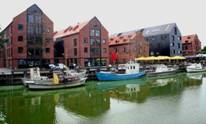



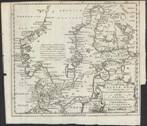
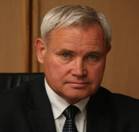
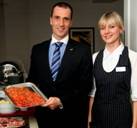

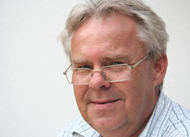
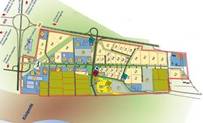


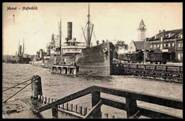
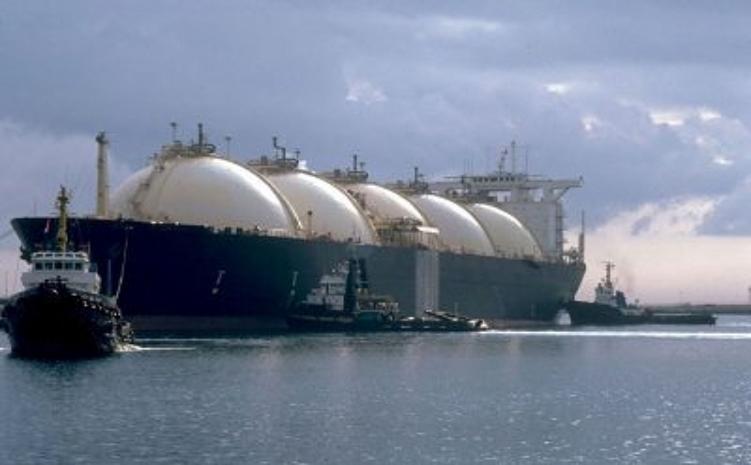




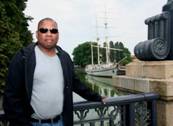
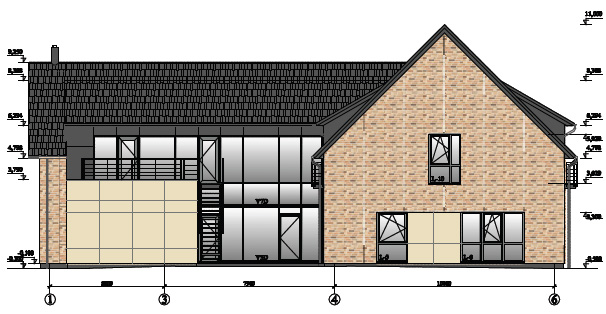































































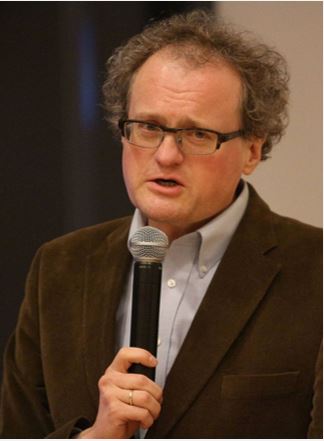
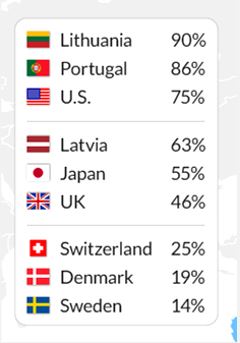
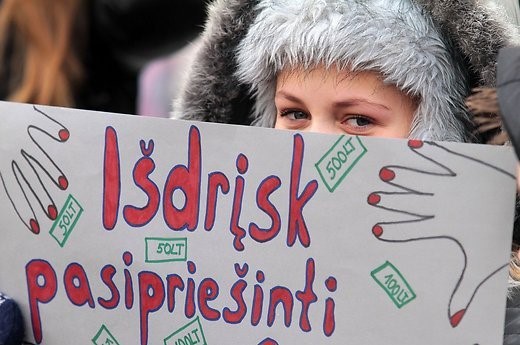


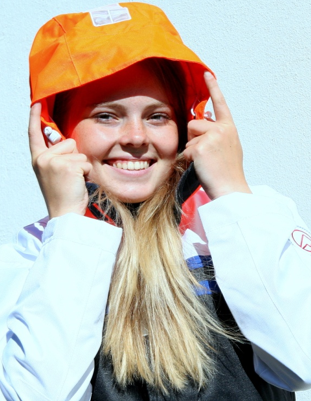
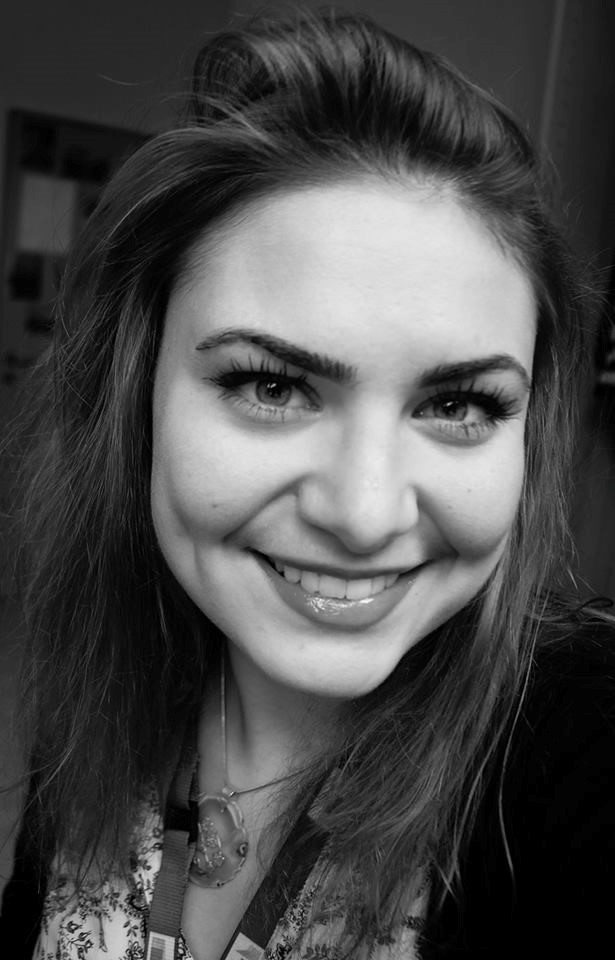
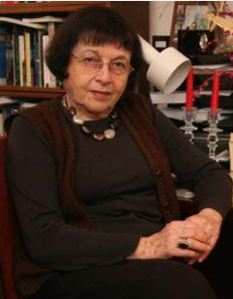
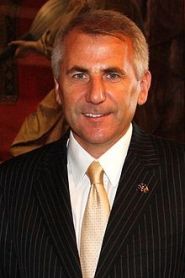
.jpg)
